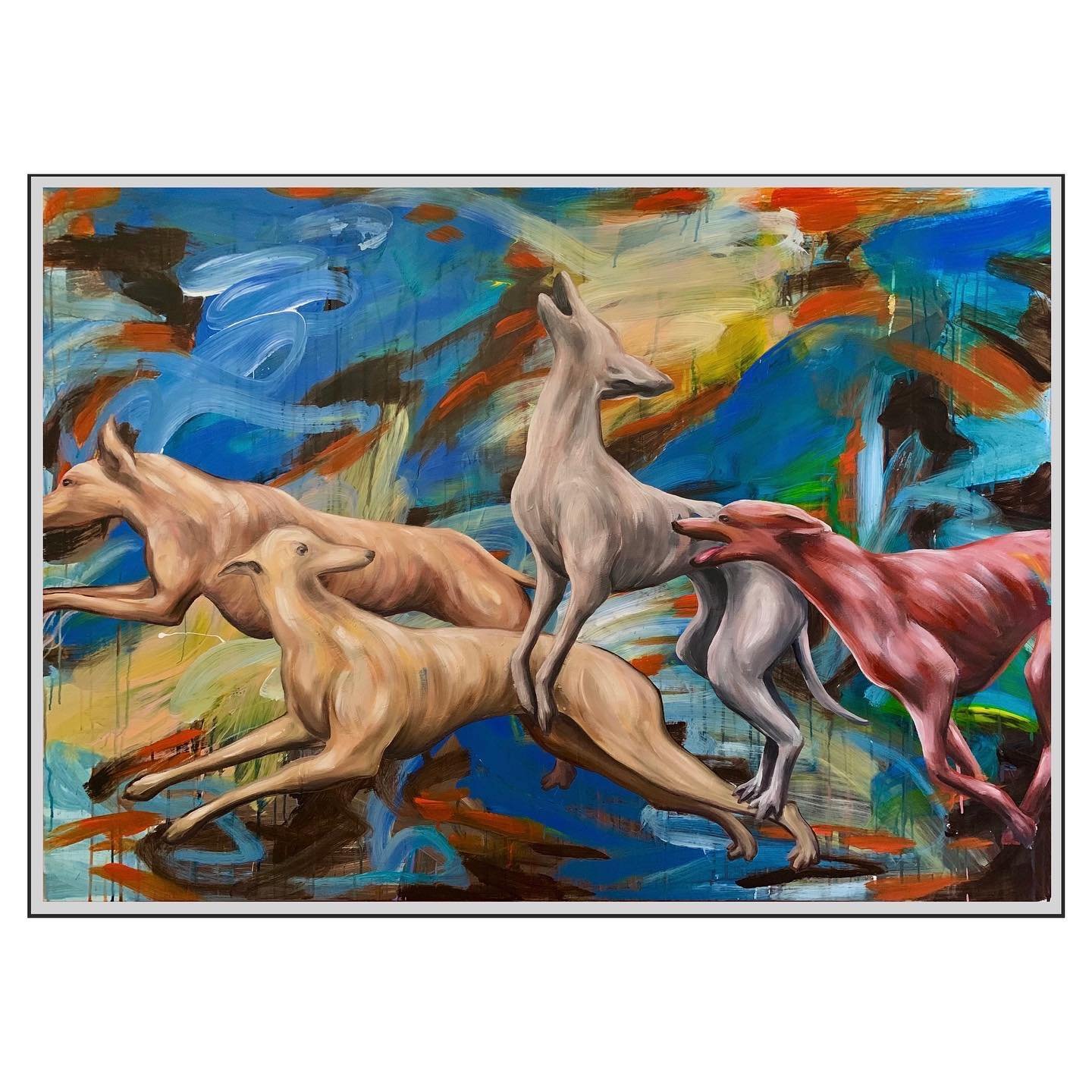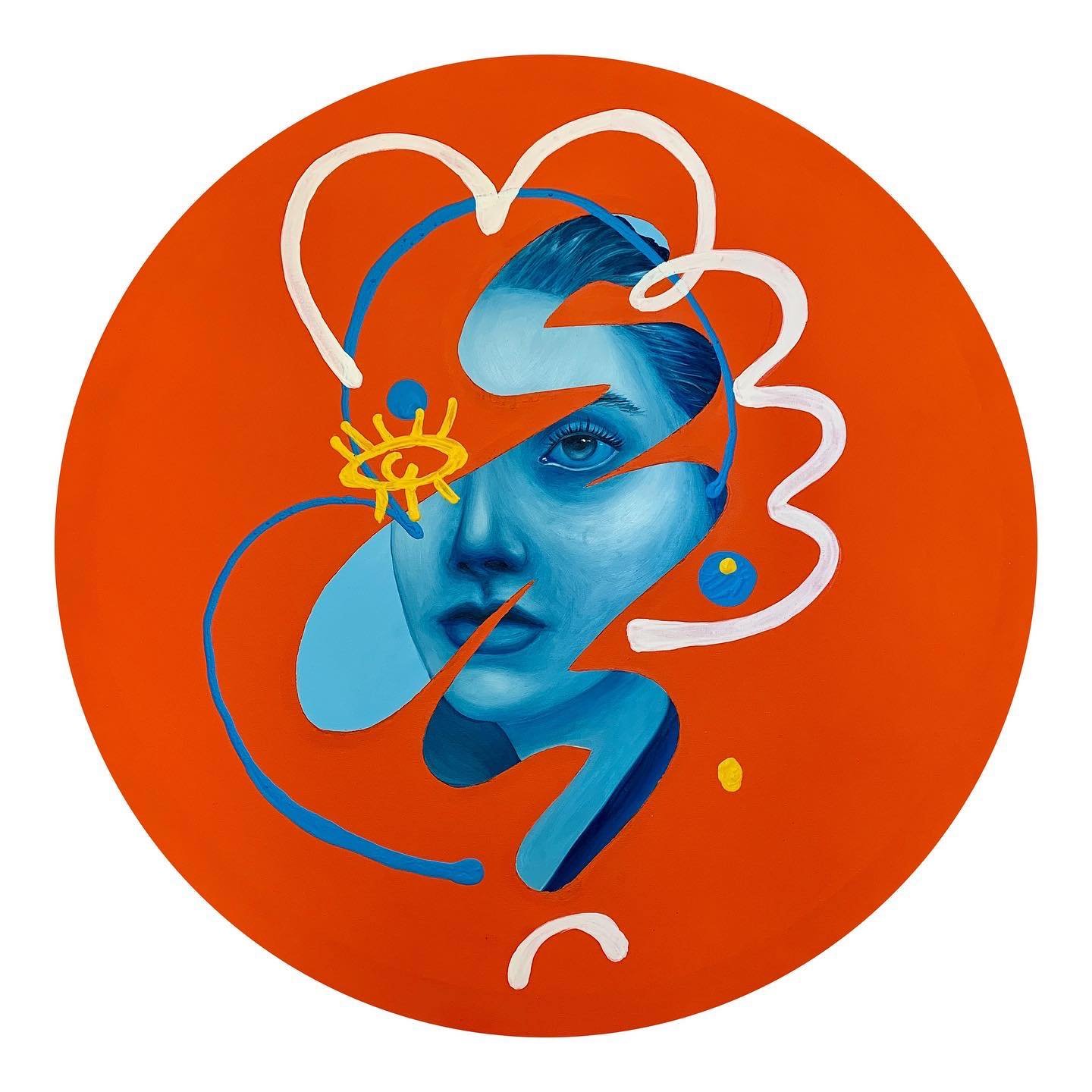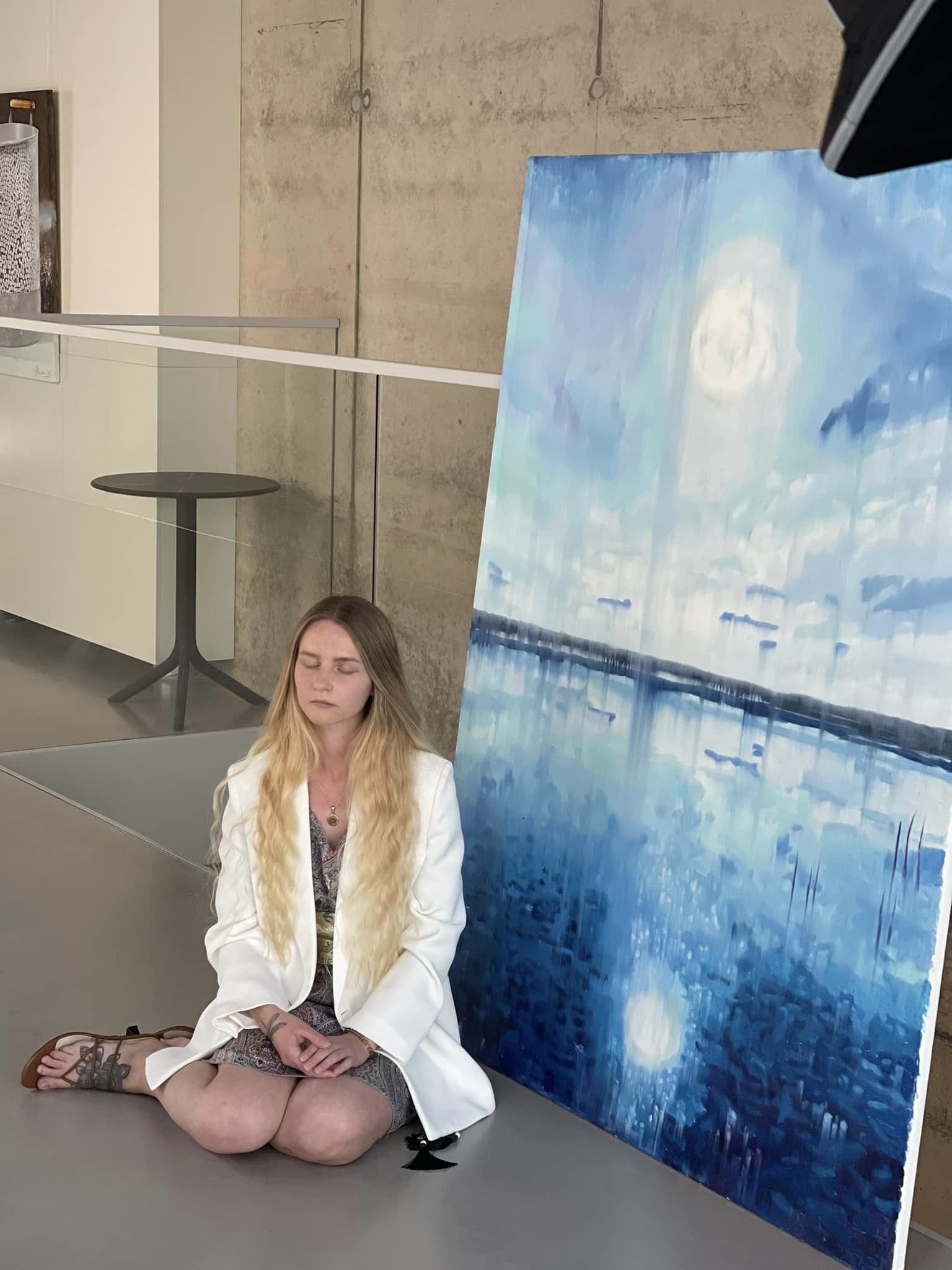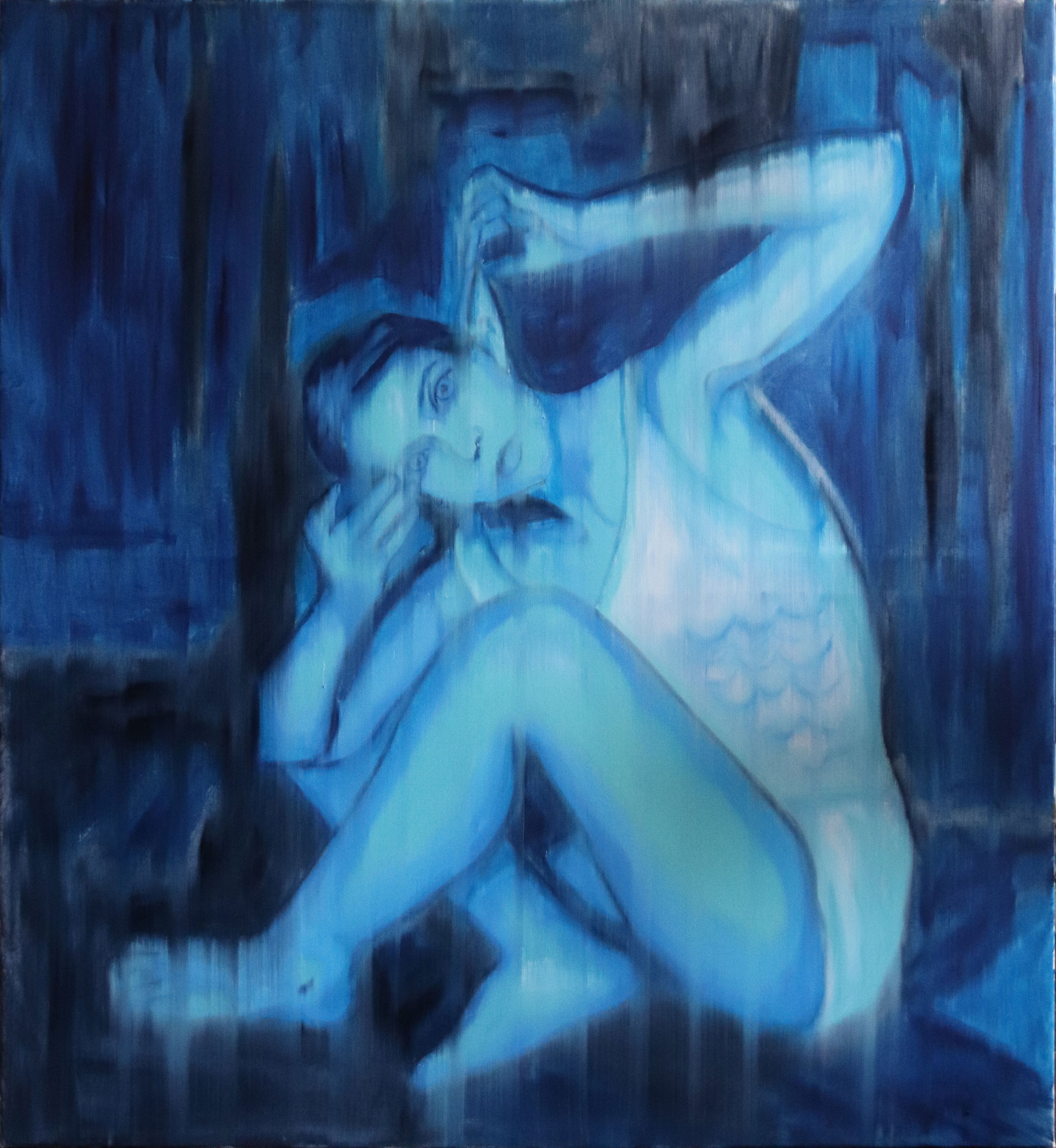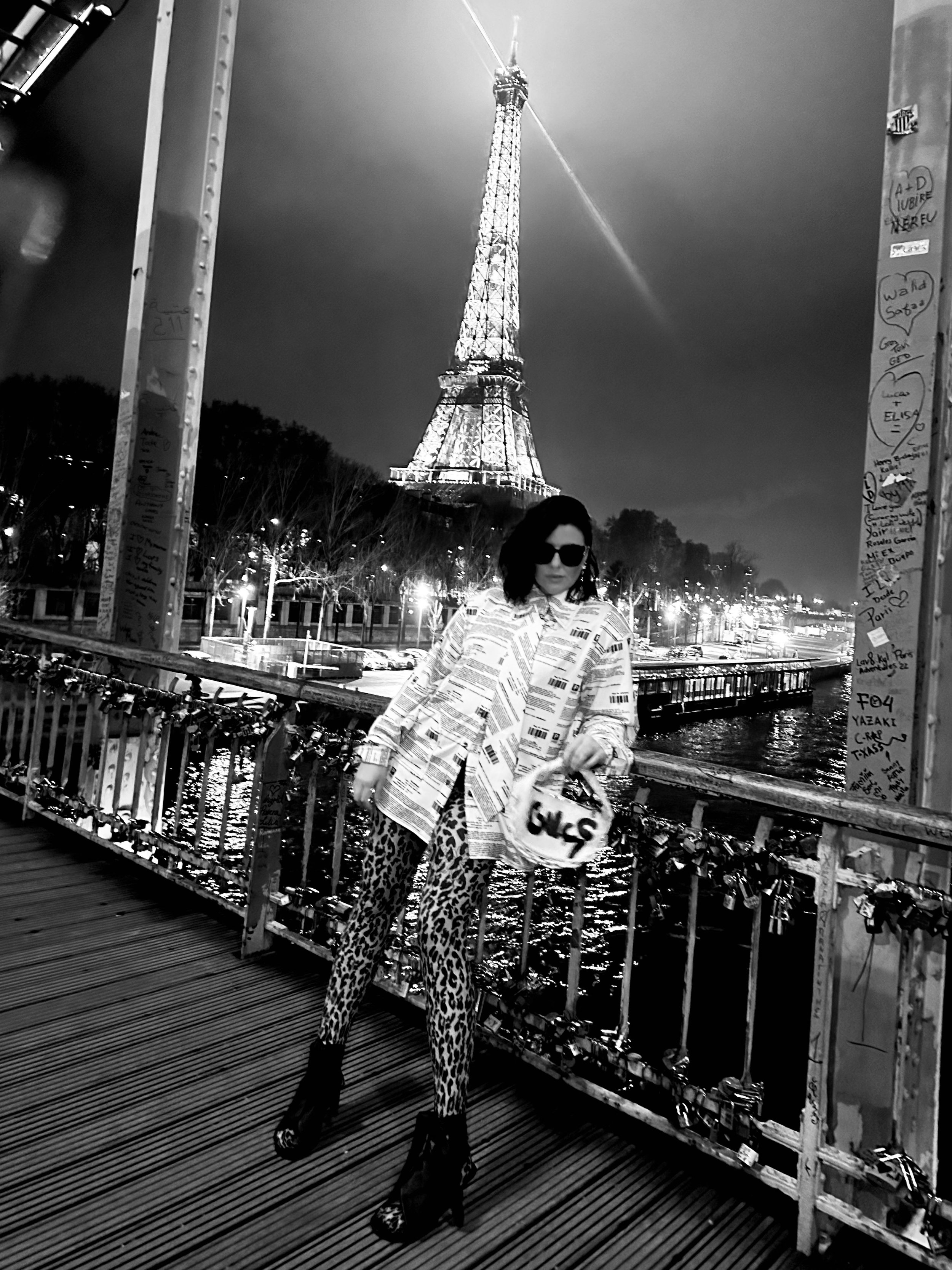ARTIST INTERVIEW: Greta Skya
Les Couleurs Miami Beach Interviews Greta Skya: From Trakai to London – The Artistic Journey of Painter Greta Skya. Greta's artistic odyssey began in the quaint Lithuanian town of Trakai. A self-taught prodigy, she nurtured an unwavering passion for art from her early years, drawing inspiration from her father's skilled brush…
Lithuanian artist Greta Skya.
Les Couleurs Miami Beach Interviews Greta Skya: From Trakai to London – The Artistic Journey of Painter Greta Skya. Greta's artistic odyssey began in the quaint Lithuanian town of Trakai. A self-taught prodigy, she nurtured an unwavering passion for art from her early years, drawing inspiration from her father's skilled brushstrokes. Relocating to London at 19, she delved into performing arts while keeping her artistic flame alive. Today, she paints her narratives using oil on canvas and linocut printmaking, carving a unique path through the world of portraits and human anatomy. As an emerging artist, Greta Skya's distinctive style continues to evolve, capturing the essence of her journey from Trakai to the heart of artistic expression.
LIUDVIKAS JAKAVICIUS: Hello Greta. Thank you for taking the time to agree to this interview. First and foremost, I'd like to ask where you're originally from.
GRETA SKYA: I hail from a charming, albeit diminutive, town in Lithuania named Trakai. It might be small, but it fills me with immense pride. Every time I return, it feels like coming home.
LIUDVIKAS JAKAVICIUS: Are you solely dedicated to painting or do you engage in other forms of work?
GRETA SKYA: Currently, I'm engrossed in the world of painting and printmaking. I create oil paintings and delve into linocut printmaking as well. Art is my sole occupation at present.
LIUDVIKAS JAKAVICIUS: When did you complete your first painting?
GRETA SKYA: My first fully realized painting was during my school days. My passion for the arts was evident even then. Encouraged by my teacher, I frequently participated in art competitions and submitted my work. However, my journey as a professional artist began around the early 2000s when I produced a large-scale portrait of Frank Kafka.
LIUDVIKAS JAKAVICIUS: Which artistic styles influence your work typically?
GRETA SKYA: I believe my work is a fusion of various styles. Rather than subscribing to a single approach, I draw inspiration from a myriad of sources. Elements of pop art are discernible, and I'm particularly drawn to realism. I strive to intertwine these influences, occasionally diving deeply into realism, while also embracing contemporary and modern art. It is like a mix.
LIUDVIKAS JAKAVICIUS: Speaking about pop art, what's your perspective on it? Some scholars dismiss it as art. How do you perceive it?
GRETA SKYA: Each artist embarks on their own unique journey. Historically, new forms of art often faced skepticism. For instance, Van Gogh's work was met with perplexity and even disdain. Yet, these unconventional creations stand the test of time. So, to those who question pop art's authenticity, I'd say give it a try. Pop art is multi-faceted and intricate. I disagree with detractors and hold it in high regard. It's invigorating and holds immense value.
LIUDVIKAS JAKAVICIUS: Who are your primary artistic influences, both from Lithuania and beyond its borders?
GRETA SKYA: In Lithuania, I have recently come across the artwork of Robert Bluj. While his work isn't new, he's a newfound discovery for me. His nude paintings have a captivating effect on me, highlighting his remarkable skills. Additionally, I hold a strong appreciation for the works of Algimantas Krisciunas. In a wider artistic context, my admiration extends to renowned figures like Frida Kahlo, as well as iconic artists such as Picasso and Salvador Dalí.
Art represents a realm of perpetual exploration, and I've also had the privilege of encountering fresh inspiration from artists based in London, like Al Slater and Michael Carson. Their exhibitions resonate deeply with me, adding new layers to my artistic journey.
LIUDVIKAS JAKAVICIUS: Did you attend an art academy in Lithuania?
GRETA SKYA: I'm largely self-taught as an artist. My upbringing was immersed in creativity due to my father, who, though not a professional artist, frequently painted at home. This early exposure kindled my passion. I engaged in sporadic life drawing and gained an affinity for anatomy and nudes, but art remained a secondary pursuit. Interestingly, I hold a degree in Drama Theater and, technically, I am an actress, even though I've pursued painting professionally. I graduated from Acting at University of West London.
LIUDVIKAS JAKAVICIUS: How and where do you discover the wellspring of inspiration for your artworks?
GRETA SKYA: Nature's fauna and elements play a significant role in kindling my inspiration. Moreover, my father's artistic endeavors during my upbringing have deeply influenced me. His creative pursuits ignited a fire within me that continues to fuel my artistic journey.
LIUDVIKAS JAKAVICIUS: How long did it take you to develop your distinctive artistic style?
GRETA SKYA: The journey to forge a unique style is a time-intensive one. Some grasp it swiftly, while for others, it's a lengthier process. For me, the turning point arrived during the pandemic, around 2020-2023, when I began merging portraiture with contemporary elements. It took approximately 2-3 years to crystallize my current style.
LIUDVIKAS JAKAVICIUS: Could you pinpoint a particularly joyful moment in your artistic career?
GRETA SKYA: The pinnacle of joy as an artist, for me, is when I receive feedback. Not in a conceited manner, but when people express their thoughts. It's invigorating to receive gratitude or witness images of my artwork adorning someone's home. The feeling that my creations can have an impact and that I'm fulfilling my true purpose engenders the utmost happiness.
LIUDVIKAS JAKAVICIUS: What do you appreciate most about your artistic creations?
GRETA SKYA: Determining what I appreciate most is a formidable task. However, I'd say it's the harmonious fusion of two worlds: humanity and nature. My work endeavors to meld them into a seamless blend. This message, this purpose, is what I cherish. Placing a fish head on a human figure or integrating bird imagery, I aim to emphasize harmony. Witnessing people grasp this intention brings me profound contentment, as it signifies that I've accomplished my objective.
LIUDVIKAS JAKAVICIUS: Thank you, Greta, for your time in granting this interview.
ARTIST INTERVIEW: Ruta Matuleviciute
Les Couleurs Miami Beach Interviews Ruta Matuleviciute: Renowned for merging surreal and magical realism, Lithuanian artist Ruta Matuleviciute infuses her work with a utopian fairy tale touch. Drawing inspiration from Baltic, Ancient Lithuanian, and global folklore, Matuleviciute's art transcends reality, inviting exploration. By blending herself with her artwork, she emphasizes…
Lithuanian artist Ruta Matuleviciute at AP Gallery in Vilnius, Lithuania.
Les Couleurs Miami Beach Interviews Ruta Matuleviciute: Renowned for merging surreal and magical realism, Lithuanian artist Ruta Matuleviciute infuses her work with a utopian fairy tale touch. Drawing inspiration from Baltic, Ancient Lithuanian, and global folklore, Matuleviciute's art transcends reality, inviting exploration. By blending herself with her artwork, she emphasizes consciousness-driven creation. Daily self-development practices, including Transcendental Meditation, fuel her boundless creativity. Exhibiting both in Lithuania and beyond, Matuleviciute's captivating work uniquely fuses imagination and personal growth.
LIUDVIKAS JAKAVICIUS: Let's start with an easy question – where are you from?
RUTA MATULEVICIUTE: I'm from Vilnius, and I'm currently based there as well.
LIUDVIKAS JAKAVICIUS: Are you a full-time painter, or do you engage in other activities?
RUTA MATULEVICIUTE: I'm a full-time artist, but I'm also collaborating with a Polish production house, where I work as a digital VFX artist, handling tasks such as matte paintings and animations.
LIUDVIKAS JAKAVICIUS: When did you create your first painting – both as a general exploration of art and as a professional piece?
RUTA MATULEVICIUTE: Art has been a part of my life from a very young age. I can't recall exactly when I started, as it was an intuitive process. During my music school years, when I studied violin and cello, I began seeing similarities between the harmonious blending of colors in paintings and musical notes coming together. My first oil painting came when I was preparing for the art academy admission exams, around 12th grade.
LIUDVIKAS JAKAVICIUS: Do you see any connection between your musical background and your visual art?
RUTA MATULEVICIUTE: Absolutely, my 12 years of classical music training had a significant influence. I found parallels between the harmony of colors in a painting and the harmonious sound of musical notes. I observed how colors could resonate similarly to musical notes, giving a cohesive and captivating experience to the viewers.
LIUDVIKAS JAKAVICIUS: Which artistic styles have influenced your work?
RUTA MATULEVICIUTE: My work draws inspiration from various styles, including 19th-century symbolism, Romanticism, and Baroque for its dramatic essence. I also embrace Surrealism and Impressionism, creating a blend of influences that shape my unique style.
LIUDVIKAS JAKAVICIUS: Who are your most significant artistic influences?
RUTA MATULEVICIUTE: Globally, David Lynch stands out due to his meditative practices and philosophical approach. Within Lithuania, my professor Egle Vertelkaite, a graphic artist, has been a profound influence with her wisdom and knowledge.
LIUDVIKAS JAKAVICIUS: Did you study arts only in Lithuania, or did you also pursue studies abroad?
RUTA MATULEVICIUTE: My formal studies have been in Lithuania so far. While I'm exploring foreign art markets, I've participated in a residency in Sofia, Bulgaria.
LIUDVIKAS JAKAVICIUS: Could you mention any young artists who catch your attention?
RUTA MATULEVICIUTE: Kristina Asinus also from Lithuania. Her unique technique using a spatula instead of brushes, especially for vibrant tropical scenes, is intriguing and impressive.
LIUDVIKAS JAKAVICIUS: Where do you find inspiration for your artwork?
RUTA MATULEVICIUTE: My inspiration flows naturally and spontaneously. Images and ideas come to me effortlessly, and the medium follows. During my academic years, I sought to understand this intuitive process by exploring psychoanalysis and ancient philosophies. However, it was Transcendental Meditation that truly opened the door to understanding my creative process. My true self, experienced during meditation, enriches my ideas and outcomes.
LIUDVIKAS JAKAVICIUS: Have you found your distinctive style, or are you still exploring?
RUTA MATULEVICIUTE: While certain symbols and themes persist throughout my work, I embrace evolution. The recent “Blue” series showcases a change in style, yet I avoid confining myself to a specific approach. I allow my art to grow and evolve naturally.
LIUDVIKAS JAKAVICIUS: Which exhibitions have been particularly significant for you?
RUTA MATULEVICIUTE: Two exhibitions stand out significantly due to their significance. The first one, which took place in 2019 at the Pamenkalnio Gallery in Vilnius, centered around the Chinese Book of Changes and featured an engaging interactive installation known as the "Wisdom Vendor." The second exhibition, titled "Atlantis," occurred in 2021 within the historical dungeons beneath Sv. Jono (Saint John) street Gallery, providing a truly distinctive ambiance and an unparalleled experience for visitors.
LIUDVIKAS JAKAVICIUS: What has been your happiest moment in your journey as an artist?
RUTA MATULEVICIUTE: Every painting process is joyous, offering fulfillment and a sense of limitless possibility. Collaborations with fellow artists have also brought happiness and profound lessons in art and teamwork.
LIUDVIKAS JAKAVICIUS: Thank you for your time, Ruta. It's been a pleasure talking to you.
ARTIST INTERVIEW: Linas Kaziulionis
Les Couleurs Miami Beach presents an exclusive interview with Linas Kaziulionis, a highly acclaimed artist who has garnered recognition as the recipient of the "Young Painters Prize" (2022) in the Baltics and the esteemed "MarteLive" prize (2022), awarded to him as the best muralist in Europe. With a Bachelor's and Master's degree in Painting from Vilnius…
Lithuanian artist Linas Kaziulionis paints a captivating mural at the Embassy of Lithuania in New Delhi, India.
Les Couleurs Miami Beach presents an exclusive interview with Linas Kaziulionis, a highly acclaimed artist who has garnered recognition as the recipient of the "Young Painters Prize" (2022) in the Baltics and the esteemed "MarteLive" prize (2022), awarded to him as the best muralist in Europe. With a Bachelor's and Master's degree in Painting from Vilnius Art Academy and the prestigious professional artist status granted by the Ministry of Culture of the Republic of Lithuania, Kaziulionis has established himself as a prominent figure in the art world over the past decade. Join us today as we delve into the captivating journey and exceptional talent of this rising star from the Baltics.
LIUDVIKAS JAKAVICIUS: Hello Linas. Thank you for your time in agreeing to give us this interview. How did you first become interested in art and what drew you to painting specifically?
LINAS KAZIULIONIS: The world of art has surrounded me since I was a child, and I got into it very intuitively: I voluntarily started attending an art school when I was still a child, followed by the Kaunas Art Gymnasium, bachelor and master painting studies at the Vilnius Academy of Arts. As far as I remember, there were no other thoughts about other activities. Interestingly, when I was studying at art school, I became more interested not in academic painting, but in street art. Maybe because I liked to spend a lot of time in the yard, in nature, being active, and somehow I got spray graffiti paint in my hands, I started hanging out at night painting on the walls of abandoned buildings, looking for more interesting and extreme places to paint, etc. While at school, I got my first income for drawing and painting and little by little I realized that this could become my main activity and source of livelihood. That is how I “grew” myself as a creator, formed my own style, gained experience, got involved in various art projects, etc. I have been actively creating like this for almost 15 years.
LIUDVIKAS JAKAVICIUS: Can you tell us about your experience studying at Vilnius Art Academy and how it has influenced your artistic style?
LINAS KAZIULIONIS: I am glad that I had the opportunity to experience and get to know different departments and professors. I studied the first two courses of my bachelors degree at the Kaunas faculty of the Vilnius Academy of Arts, the painting department, then I stopped and finished the remaining courses in Vilnius. I continued my masters painting studies in Vilnius. All experiences were very interesting and important, according to the study program I went through different disciplines and creative tasks in small steps. During my studies, I not only painted pictures, but also analyzed different researched topics, participated in seminars, meetings with teachers and classmates, and also selectively touched on other subjects, e.g. color psychology and others. During my studies, I also took advantage of the opportunities of the Erasmus exchange program, after my masters studies, I went to a graduate internship in Italy.
I think that the studies were important and useful for me as a growing painter. I dont think they shaped or influenced my painting style, they gave me more practical, analytical knowledge. Masters studies were memorable, perhaps because our course was relatively small compared to bachelor studies, which led to a closer and closer relationship with the lecturers, and here I also went deeper into the researched topic, which I develop further.
LIUDVIKAS JAKAVICIUS: Your muralistsc works have become a defining feature of your portfolio. Can you talk about your process for creating large-scale murals and how you choose your subject matter?
LINAS KAZIULIONIS: When painting large-format murals in a public space, I always take into account the area, its history, the surrounding environment, architecture, I consider how it will fit into the environment, or conversely, how it will play with it. The choice of topics also depends on the current affairs of the time, my own interests, as well as their choice sometimes determines whether I initiate the project myself or it is one of the other project parts. For example I painted the piece “Dont look for a corner” while participating in a social campaign that promoted sorting, so it is clear that the theme of the piece is dictated by the message of this campaign, e.g. I painted the work “Information bubble” taking into account the current events of the time when the pandemic started and all fake news was a very escalating topic, with this work and message I invited people to be more careful in choosing the information presented. For example, in “Open Gallery” I painted bright, playful murals, because bright colors are very suitable in an urban environment where many events take place, and for example, mural “The Painter” in Kaunas is painted very delicately but at the same time with an interesting idea, since the wall is in the old town, in the cultural heritage area, I wanted to find a balance between the nearby architecture and mural art. Thus, the selection of topics and the creation of sketches is one of the most complex stages and processes that require a lot of analysis. Later, technical matters begin - obtaining permits from the owner, the municipality, preparing for painting: mixing colors, choosing tools, renting suitable equipment - I choose and rent a lift based on the accessibility and height of the wall. Even a different wall structure can dictate a different drawing technique. I also sometimes have to plaster in places, properly prepare the wall, it is important for me that the drawing does not fall off after a week due to improper preparation. This is probably not important for the longevity of the drawing, but more for the professional side. Everyone probably knows that if I paint a mural, it will be painted not 10, but 100 percent with quality, starting from the idea, sketches and ending with the final result.
LIUDVIKAS JAKAVICIUS: You won the Young Painter Prize in 2022 and were named the Best Young Painter in the Baltic States. How did it feel to receive this recognition?
LINAS KAZIULIONIS: Winning the “Young Painters Prize 2022” of the Baltic States is extremely significant and important for me as a painter in terms of its prestige and the opportunities that have opened up. The competition commission was international, including influential art experts from Paris - such an assessment allows me to verify that my work is not only evaluated locally. The winning work was included in the collection of the Lithuanian National Art Institute (LDG), which means - in the art history of the country, which is truly an honor for me. Along with the win, the opportunities to hold exhibitions opened up: in September. an exhibition is planned in Paris, H Gallery, in November - in Pamenkalnis Gallery, and I also have a 2-month residency in Reykjavik, Iceland. That month was especially fun, because a few days later I received a message that another international competition “MarteLive” recognized me as the best mural artist in Europe. It is worth noting that it is important not only to celebrate this victory, but also to work hard and use all the opportunities that have opened up. Immediately after the wins, I agreed on a solo exhibition in New York (USA) (took place in March), I went to do mural in New Delhi (India), and in addition to the aforementioned solo exhibitions in Paris (France) and Vilnius (Lithuania), I will hold one each in Brussels (Belgium) and In Trakai Voke (Lithuania) - and all this in one year.
LIUDVIKAS JAKAVICIUS: Your works often combine classical art with modern themes and technology. Can you discuss the inspiration behind this approach?
LINAS KAZIULIONIS: Some art theorists call this period metamodernism - I also aim to say something new with my work, but remain sincere and reflect on the impact of innovation on society. Much has been created in the world, painting should not repeat the beauty of nature or play only in artistic forms. It is important for me to harmonize everything: canons of art, interpretations of messages from art history, contemporary issues. In this way, the work becomes conceptual, not just a decoration. In addition to this, I also aim for the work of art to be read not only by art professionals, but also by the public: I want to bring the message to a wide circle of people, not to be confined only to the discussions of academics.
LIUDVIKAS JAKAVICIUS: What are your thoughts and experience with NFTs? Do you think NFTs are the future of art?
LINAS KAZIULIONIS: I have my own NFT project “minted” (http://minted.lt), when I divide one mural sketch into boxes, inviting people to buy them. I have found NFT to be a good tool for selling large format street art. However, after going through the entire process of creating and selling NFT, actively participating in discord and reddit discussions, I realized that 90% of the success of the NFT project is PR, it has little to do with art and its quality. Since my goal is to create, I have left the NFT area, but maybe I will come back someday.
LIUDVIKAS JAKAVICIUS: How do you balance creating works for public spaces, like murals, versus more intimate pieces, like your small-format oil paintings?
LINAS KAZIULIONIS: I dont have any particular strategy, I just enjoy the advantages of both media - a mural allows you to express yourself on a particularly large area, and at the same time it requires an adapted composition, color and consideration of details. The theme is often universal, and the implementation is understandable to the public. Here I particularly like to apply appropriation, to flirt with icons of art history that the general audience knows. Meanwhile, oil paintings allow you to delve into the nuances of implementation, color and light. The cycles of paintings have clear themes, a lot of analytical and theoretical justification.
LIUDVIKAS JAKAVICIUS: Can you walk us through your creative process, from conception to execution, for a new painting or mural?
LINAS KAZIULIONIS: The creative process of a street art drawing begins with the analysis of the area where I draw. It is important for me that the drawing relates to the place, its history, and that the drawing also fits with the existing architecture. Then the creative process moves to a piece of paper and a pencil or computer programs that I use to create sketches. The creation of sketches is the longest and most complex process that I spend the most time on. Well, the other stages are more technical or documentary stages - obtaining permits from the owner or owners of the building, permission from the municipality, sometimes from the department of cultural heritage, if the wall of the building is in a protected area. After receiving all the necessary permits, the technical stages begin - choosing a drawing technique, renting a lift, buying paints, mixing them, choosing tools. Next comes wall painting, the duration of painting depends on the complexity of the drawing, the size of the wall, even weather conditions and other, sometimes even extreme, conditions. Lets not forget that after the drawing is painted, I also take care of the drawings publicity: press release, communication with journalists, there are also filming on television, live broadcasts, publicity on social networks - all this takes a lot of time.
The process of painting on canvas looks completely different. I spend even more time creating sketches, the painting itself takes even weeks, sometimes even months. If personal painting exhibitions are planned, other processes also arise - I plan the concept of the exhibition, the exposition of the exhibition, create publicity posters, publicize. If the exhibition is abroad, then I deal with logistical issues, transportation of paintings and other matters. I am happy with my cooperation with the international art expert Ornela Ramasauskaite (head of artXchange Global), who helps me both in terms of art management and marketing, as well as by mentoring me on the nuances of creation. It is especially important for an artist to have an expert with whom they can discuss the content without fear of being influenced - it is like an exercise of the mind to achieve maximum quality.
LIUDVIKAS JAKAVICIUS: You have participated in interdisciplinary and painting projects. Can you tell us about one of your most memorable collaborative projects and what you learned from it?
LINAS KAZIULIONIS: There were an infinite number of such projects and all of them with different nuances and experiences, it would be difficult to single out just one. Each project brings different challenges and even adventures. But lets try to remember. I think one of the most memorable was the “Dadaist Mona Lisa” maybe even though it was one of the most technically complex murals and innovative even on a global scale, because I used a 3D effect and elements that allow me to modify the drawing with the help of technology. I remember the mural “Dancer2”, which was dedicated to the famous Kaunas dance theater “Aura” because of its extremely beautiful opening, it was the dancers of this theater who opened the painting while dancing next to the wall and presented it to the public. I painted the mural “Dont look for a corner” on a particularly busy street in Vilnius, I remember it with a smile, practically every day the police and other authorities came to check my permission to draw. Absolutely all the murals drawn abroad, starting from Thailand, India or ending in Italy, Kosovo were extremely memorable due to cultural changes or environment. As I mentioned, there were an endless number of projects and I could probably tell very interesting stories about each drawing process.
LIUDVIKAS JAKAVICIUS: You hold official professional artist status provided by the Ministry of Culture of the Republic of Lithuania. Can you discuss the importance of this recognition for your career?
LINAS KAZIULIONIS: I think that any recognition given to you is important, this one too, especially given by the Ministry of Culture of the Republic of Lithuania. This status has other benefits. When receiving this status, an artists support number is also granted, which means that individuals or legal entities can designate a portion of personal income taxes when declaring their income in Lithuania every year. I use this advantage every year, and I invite everyone who is interested in art and who wants to contribute to my work or become my small patrons to dedicate this part. I am glad that my small patrons are increasing every year
LIUDVIKAS JAKAVICIUS: What advice would you give to aspiring artists, especially those interested in muralistsc art?
LINAS KAZIULIONIS: It is a process that requires a lot of not only creative, but also physical work, so a lot of work and practice, practice and practice again. I will probably wish to achieve your goals and not give up, even if something doesn’t work out or doesn’t come very quickly.
ARTIST INTERVIEW: Laura Kazlauskiene
A punk with pink feathers - this is how one could describe the style and art of Laura Kazlauskiene, one of the most popular artists in Kaunas. The Punk Gallery has become her second name, while an exclusive and unmistakable style defines her third. Laura's works are meant for spaces inhabited by brave and creative individuals, whether it be a minimalist flat…
The artist Laura Kazlauskiene at her studio known as Punk Gallery.
Les Couleurs Miami Beach Interviews Laura Kazlauskiene: A Punk with Pink Feathers. A punk with pink feathers - this is how one could describe the style and art of Laura Kazlauskiene, one of the most popular artists in Kaunas. The Punk Gallery has become her second name, while an exclusive and unmistakable style defines her third. Laura's works are meant for spaces inhabited by brave and creative individuals, whether it be a minimalist flat or a trendy nightclub. The most crucial element lies in the perspective and worldview of the individuals inhabiting those spaces. Laura's primary message to her audience is to "liberate your mind."
LIUDVIKAS JAKAVICIUS: Hello, Laura. Thank you for taking the time to give us this interview. Let's start with an easy question - where are you from?
LAURA KAZLAUSKIENE: Thank you for having me. I was born here in Kaunas, but not in the city center. I grew up near Kaunas, in Palemonas, close to the lake. I was a wild soul, always without shoes, riding bicycles, and enjoying the outdoors after school. I wasn't a city girl. It's amazing that I grew up like this.
LIUDVIKAS JAKAVICIUS: But now you're like a city girl, right? You want to experience everything in life?
LAURA KAZLAUSKIENE: I've experienced life in the countryside. My husband wants to move to the countryside now, but I don't want to. I'm a city woman now, and I enjoy living in the Old Town. Sometimes it's good to be outside the city, but not for living. I want to do a lot of things, and to do that, I need to be in the heart of the city. Nature inspires me a lot, especially for my paintings. I believe my art will be amazing after my Kilimanjaro trip. But I like to live in the Old Town.
LIUDVIKAS JAKAVICIUS: Are you a full-time painter?
LAURA KAZLAUSKIENE: Yes, I am. I don't have any other jobs. I'm always creating something. Currently, I'm working on a photography project, but I will paint on it. I'm always surrounded by colors, making something for the world.
LIUDVIKAS JAKAVICIUS: When did you create your first painting?
LAURA KAZLAUSKIENE: I can't recall exactly, but let me tell you a story. When I was in school, I was preparing for my art exams. I painted a large piece of paper. One morning, my mom came to me and showed me a piece of that paper. She said, "Look, this is good." And I was amazed. It was real. I can show you that painting; it's framed and hangs at my mom's house. It depicts half a face in shadow, and it wasn't planned. It felt like a miracle. It's my mom's favorite. I remember this picture from my childhood.
LIUDVIKAS JAKAVICIUS: Do you remember how old you were then?
LAURA KAZLAUSKIENE: I was around 14 years old. So, in my mom's and aunt's homes, you can find many of my early paintings.
LIUDVIKAS JAKAVICIUS: When was your first professional painting?
LAURA KAZLAUSKIENE: I think it was when I was finishing school and had to do an exam. The painting I created for the exam was displayed at the city hall. But when I went back after three years to retrieve it for my mom, they told me it had disappeared. It was insane. Someone took that painting to their home.
LIUDVIKAS JAKAVICIUS: What did you study?
LAURA KAZLAUSKIENE: I initially studied Fashion Design but quit and pursued a degree in Art History and Criticism instead.
LIUDVIKAS JAKAVICIUS: Do you think it's important to study painting, or do you feel it's not necessary?
LAURA KAZLAUSKIENE: In my case, I don't think it's necessary for my style and my world. I have a lot of knowledge due to private lessons in my childhood, and I seek different paths. I don't want to follow strict rules in an academy. However, I may consider studying painting in the future for the sake of quality and if I find the time, perhaps in Italy or elsewhere.
LIUDVIKAS JAKAVICIUS: Which artistic styles have influenced your work?
LAURA KAZLAUSKIENE: I've always loved Picasso and surrealism, although I don't paint in that style. I used to paint with dark colors. I don't have one main style; I seek inspiration every day.
LIUDVIKAS JAKAVICIUS: Have you exhibited your work outside of Lithuania?
LAURA KAZLAUSKIENE: Not yet, but I have plans to work in Dubai within a few years. Until now, I've had two exhibitions here in Kaunas, Lithuania.
LIUDVIKAS JAKAVICIUS: Where do you find your inspiration? Is it solely from nature?
LAURA KAZLAUSKIENE: Inspiration can be found everywhere: in music, films, friends, and every little detail. Even now, I'm looking at a metal bar, and it inspires me. Every single thing can be a source of inspiration at any moment. It's important to look around and find magic everywhere. I believe in magic, and that might be the key to my creative process.
LIUDVIKAS JAKAVICIUS: How did your love for art develop?
LAURA KAZLAUSKIENE: Maybe I was born with it. My grandmother and her sister were both writers and painters, so perhaps it's in our roots. I'm not sure. My mom isn't an artist, but she has an artistic soul. In my family, I am the only artist, but my grandmother's sister used to paint the walls of her own home.
LIUDVIKAS JAKAVICIUS: Your paintings are unique, not only due to your distinct style but also the materials you use. I particularly love that you use natural linen for your canvases. How did you come up with that idea?
LAURA KAZLAUSKIENE: I'm always searching and thinking about what different materials would look like with my art, something darker and more elegant. I tried using linen, and it turned out to be a great choice.
LIUDVIKAS JAKAVICIUS: How long did it take for you to develop your own style? Now, if I see one of your paintings, I can recognize it as yours.
LAURA KAZLAUSKIENE: It took about five years for my current style to develop. Before that, it was slightly different. Even if you look at my paintings from my first exhibition, you'll notice a change.
LIUDVIKAS JAKAVICIUS: What has been the happiest moment of your artistic career so far?
LAURA KAZLAUSKIENE: One of the happiest moments was when all the flower bouquets sold out at my exhibition. People were buying flowers because of the event, and it was a wonderful feeling. Also, I recently had a pleasant experience of organizing a painting session on the beach in Palanga.
LIUDVIKAS JAKAVICIUS: What do you enjoy about your work?
LAURA KAZLAUSKIENE: I enjoy everything, from the shopping for materials to the colors I use. Currently, I'm excited about buying some art supplies in Berlin. Every detail matters to me, from the process of creating a painting to where it will be displayed. I also consider the person and the place I'm painting for.
NOTE: Please feel free to explore more about the artist and view her stunning works by visiting her on INSTAGRAM.
ARTIST INTERVIEW: Gabriele Sermuksnyte.
Gabrielė Sermuksnyte was born in 1990 in Kaunas, Lithuania. She is a representative of figurative painting in the young generation. The artist explores the other side of pop culture, ironically commenting on the decadence of modern society and showing its merciless reflection. The figures in Gabriele's paintings, including characters from fairy tales…
Artist Gabriele Sermuksnyte at her studio in Vilnius, Lithuania.
Les Couleurs Miami Beach conducted an interview with Gabrielė Sermuksnyte, a well-known painter based in Vilnius, Lithuania. The interview was conducted by our art expert, Kristina Končiūtė-Kulešė, who holds a BA in Art History, Criticism, and Conservation, for our segment "Trending in Lithuania".
Gabrielė Sermuksnyte was born in 1990 in Kaunas, Lithuania. She is a representative of figurative painting in the young generation. The artist explores the other side of pop culture, ironically commenting on the decadence of modern society and showing its merciless reflection.
The figures in Gabriele's paintings, including characters from fairy tales, plastic mannequins, and beings between a person and an object, seem to be in a constant state of waiting. The viewer recognizes the elements of mass culture and is drawn into a dream-like or mirage-like narrative through the pictorial images.
The concept of beauty acquires different meanings and purposes in Gabriele's work. The paintings approach beauty ironically, creating a rich projection of mass culture and presenting it back to society. The viewer is drawn into a constant game, an invitation to solve riddles and guess what cards are being shown this time.
Gabrielė has organized four personal exhibitions in Lithuania and has participated in a dozen group exhibitions in Lithuania, India, Holland, Poland, and Georgia.
KRISTINA KONCIUTE-KULESE: Hello Gabriele. Thank you for your time in agreeing to give us this interview. What’s your background?
GABRIELE SERMUKSNYTE: I graduated from the Kaunas Art Gymnasium, a very nice school which my husband calls Hogwarts. Everyone there looks in the same direction and there is no conflict about favorite activities, as in other schools, this gave such a silky start to the world of art. Later, I studied painting at the Vilnius Academy of Arts for a bachelor's and a master's degrees.
KRISTINA KONCIUTE-KULESE: What are you trying to express with your art?
GABRIELE SERMUKSNYTE: For me, painting is a complete therapy, a meditation, a diary. I create what seems relevant to me and the world at that moment.
KRISTINA KONCIUTE-KULESE: How does your work comment on current social or political issues?
GABRIELE SERMUKSNYTE: Social and political themes are very relevant to me and those themes often appear in my paintings. Although it may not be visible at first glance, I do not aim for it. I want my works to be multi-layered and not read immediately. I broadcast the pains of society from my perspective. I think art is one of the most powerful forms of raising important questions and drawing attention to certain topics that don't get the attention they deserve.
KRISTINA KONCIUTE-KULESE: Who are your biggest influences?
GABRIELE SERMUKSNYTE: Visually, I'm attracted to the Fashion World, often with very glamorous, deliciously conveyed messages. The best example is Vogue Italia when the editor was Franca Sozzani. Many painful, political, and social hooks are presented in such a way as to reach even the most distant consciousness. Conceptually, I care about what is happening around me. I am not and do not want to be a representative of interior painting, so the events of the world, my country, my city, and my child's kindergarten are my source of inspiration.
KRISTINA KONCIUTE-KULESE: If you could have dinner with any artist, living or dead, who would it be?
GABRIELE SERMUKSNYTE: My all-time favorite painter is Jean-Michel Basquiat. I would love to have dinner with him and hear stories about art, about New York at that time, Andy Warhol, etc. All in all, that era seems to me to be somehow magical.
KRISTINA KONCIUTE-KULESE: How do you maintain a work/life balance?
GABRIELE SERMUKSNYTE: I have two small children, one of whom still wakes up every couple of hours at night, so I have developed great skills that help me achieve work/life balance. For me, painting is both work and recreation that keeps my mind sharp, so I find time for it.
KRISTINA KONCIUTE-KULESE: How does your geographical location affect your work and/or success?
GABRIELE SERMUKSNYTE: Lithuania is a small country with many good artists and a very small market for all of them to flourish. I think that makes it a little harder for success to come.
KRISTINA KONCIUTE-KULESE: What do you do to maintain your mental health?
GABRIELE SERMUKSNYTE: I do sports. I don't have much time for that at the moment, I spend at least 15 minutes a day. I try to eat healthily. And I spend time only with those people with whom we grow in relationships and friendships and help each other improve.
KRISTINA KONCIUTE-KULESE: What are you working on that you’re excited about right now?
GABRIELE SERMUKSNYTE: At the moment, the topic of motherhood is very relevant to me. I have planned a collection of artworks about it. I think it is given too little attention, considering how hard psychological work it is and how many accidents have been reported in the media on this topic in our country recently. Because I'm in the prime of motherhood myself, I think I can and must bring certain aspects of it to the surface. One of the reasons is to make mothers feel better about themselves. I just have to find the time to paint those artworks
KRISTINA KONCIUTE-KULESE: Thank you so much for taking the time to provide us with this interview.
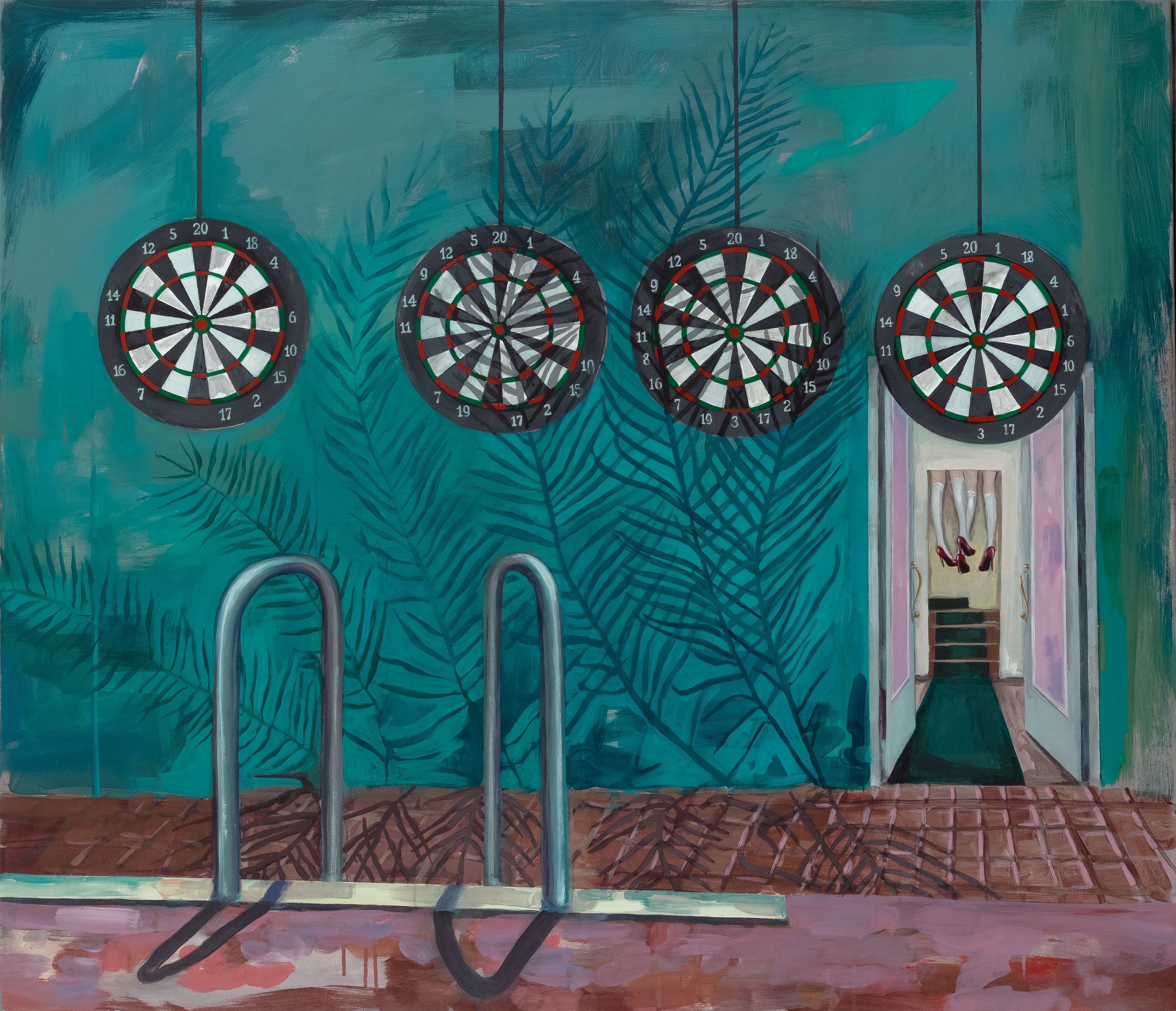
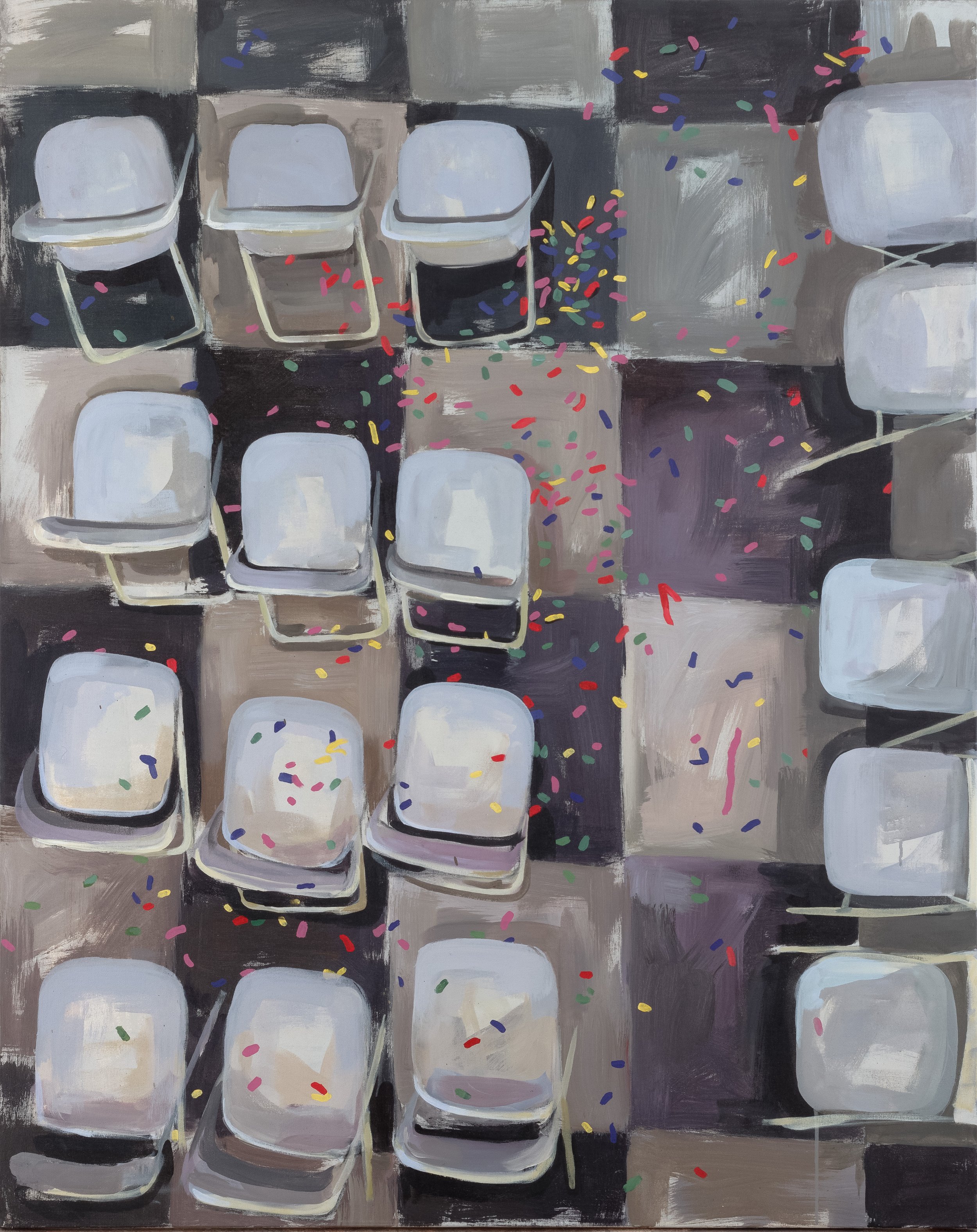
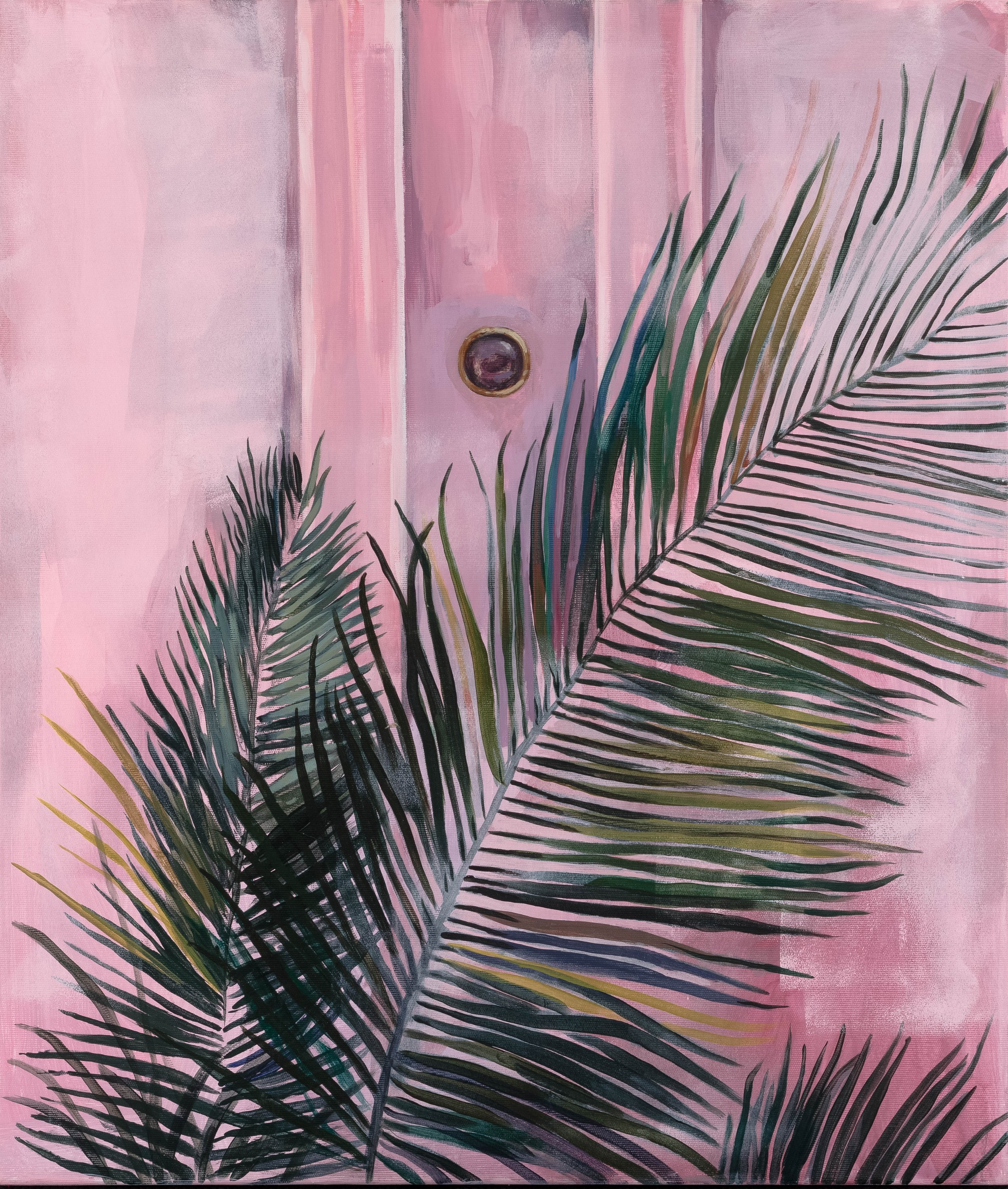
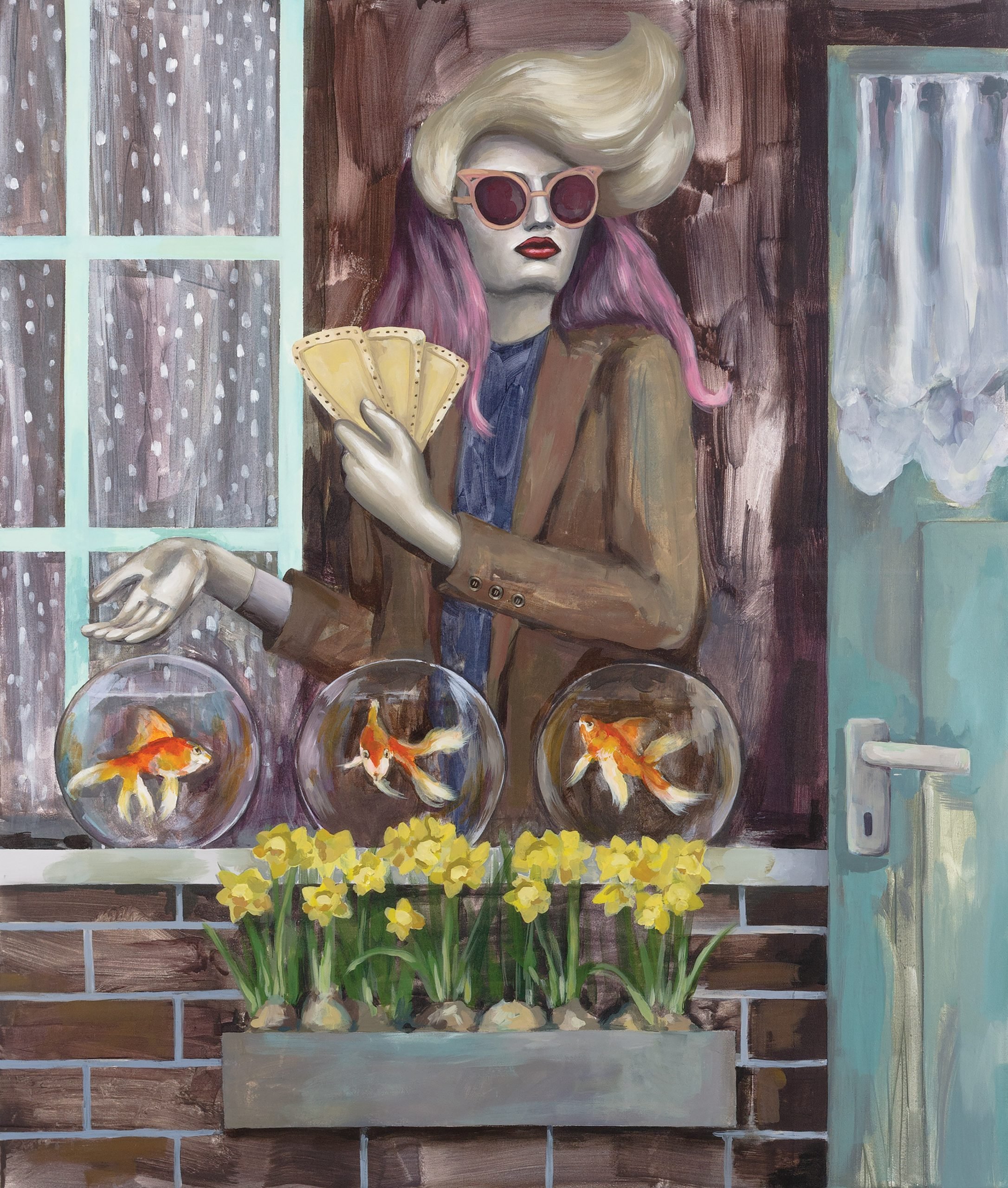
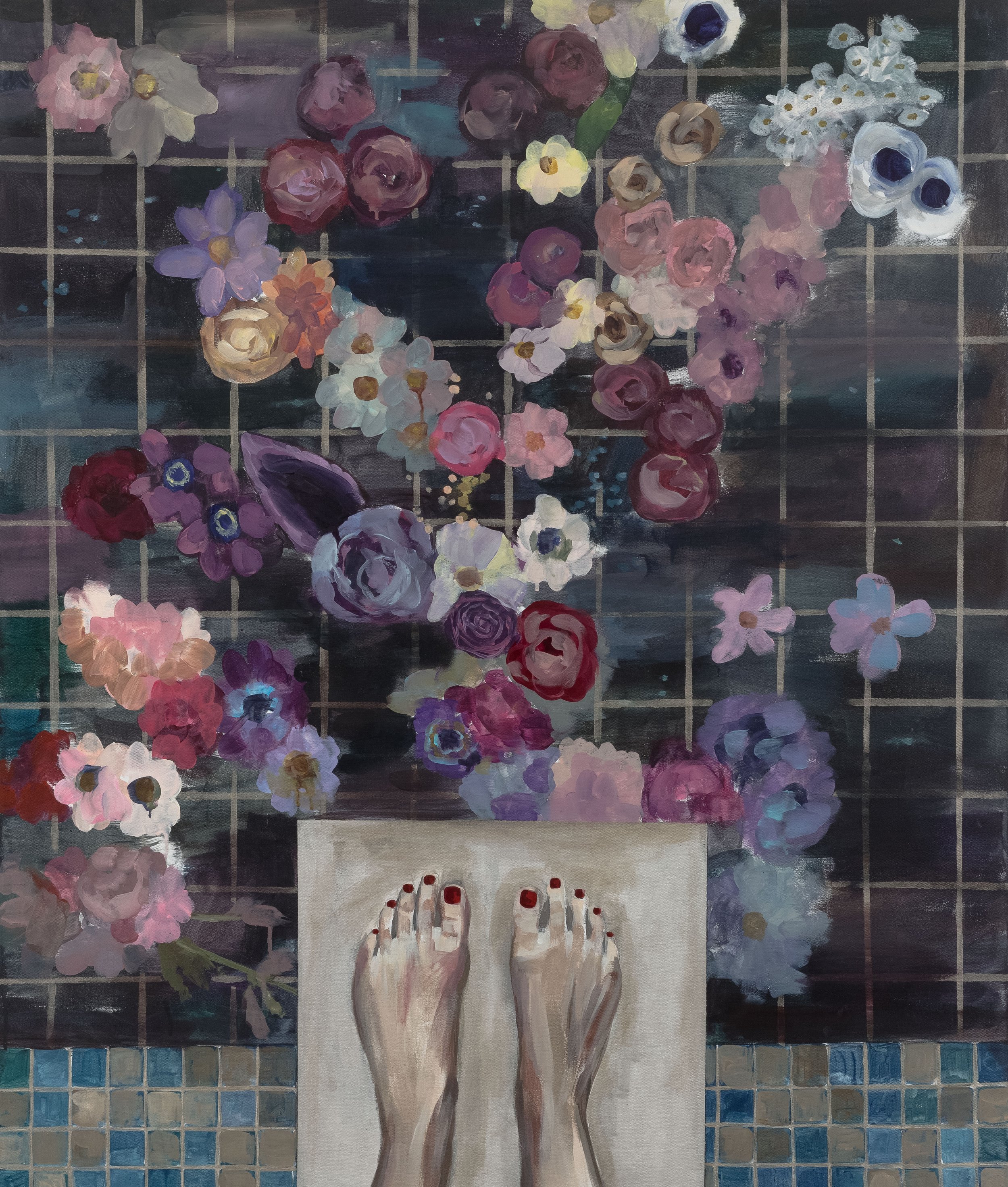
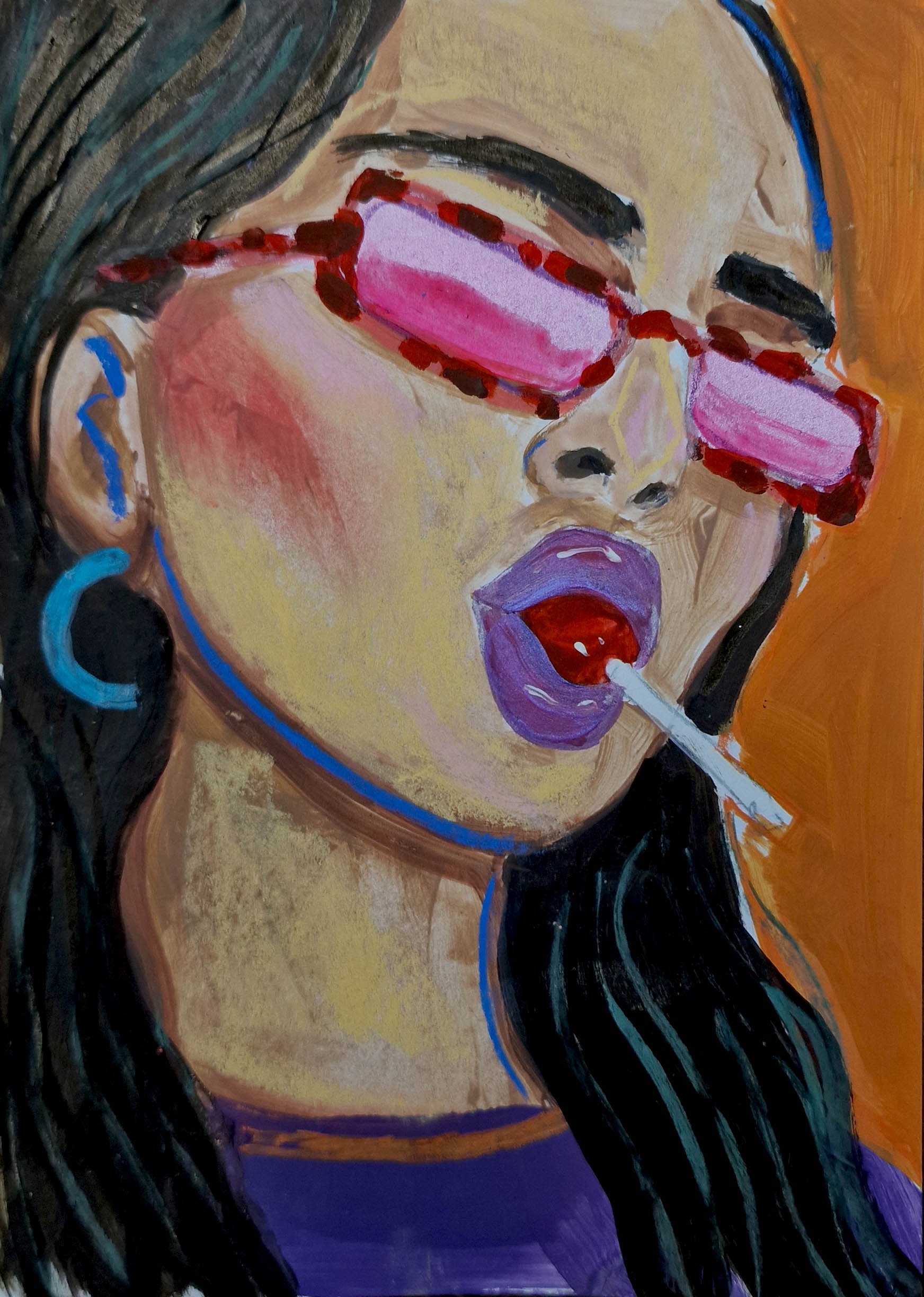
ARTIST INTERVIEW: Skaiste Semenike.
Born on January 5, 1981, Skaiste Semenike has had a passion for creating unique art that not only surprises but also brings joy to people's faces since her teenage years. Her art is a reflection of her free-spirited and fun personality, as it is colorful, playful, and often laced with a touch of sarcasm. In this exclusive interview with Les…
Artist Skaiste Semenike in Paris, France.
Les Couleurs Miami Beach had the pleasure of interviewing Skaiste Semenike, a prominent painter hailing from Lithuania. The interview was conducted by Liudvikas Jakavicius, our editor for "Trending in Lithuania".
Born on January 5, 1981, Skaiste Semenike has had a passion for creating unique art that not only surprises but also brings joy to people's faces since her teenage years. Her art is a reflection of her free-spirited and fun personality, as it is colorful, playful, and often laced with a touch of sarcasm. In this exclusive interview with Les Couleurs Miami Beach Magazine, we get a glimpse into the world of this Lithuanian artist from Vilnius who generously donated one of her magnificent works for the first-ever "Les Couleurs Charity" Christmas Gala in Lithuania in 2022.
LIUDVIKAS JAKAVICIUS: Hello Skaiste. Thank you for your time in agreeing to give us this interview. My very first question which is quite easy is - where are you from?
SKAISTE SEMENIKE: I was born in 1981 in Klaipeda, but now I reside in Vilnius.
LIUDVIKAS JAKAVICIUS: Are you a full-time artist?
SKAISTE SEMENIKE: Certainly, I work as a full-time painter, and my livelihood solely relies on my art. While some months are more prosperous than others, I am grateful that I can sustain myself through my work as an artist.
LIUDVIKAS JAKAVICIUS: When did you first start painting?
SKAISTE SEMENIKE: I have been painting for as long as I can remember, dating back to my childhood years, although my mother insists that I started painting when I was just three years old. My interest in art never wavered, and I pursued by studying art at the best art school in Klaipeda, namely Klaipedos Adomo Brako Dailes Mokykla. The school boasted highly skilled and accomplished teachers, some of whom were renowned Lithuanian artists. I studied there until I graduated, gaining knowledge in art history, drawing, colors, graphics, and more. I focused all my energy on painting, despite my mother's initial wish for me to become a professional dancer like Skaistutė Idzelevičienė, after whom I was named. My mother even took me to dance classes, hoping to steer me in that direction, but I was resolute in my desire to pursue painting. My parents were incredibly supportive of my decision, and they never forced me into anything that didn't align with my aspirations.
LIUDVIKAS JAKAVICIUS: When have you done your first painting?
SKAISTE SEMENIKE: When I went to the art school at around 12 years old, although the exact date escapes me at the moment. As a professional artist, I have been actively painting and selling my work for the past six or seven years. I still hold on to the very first painting I ever made as a professional artist, which serves as a cherished memento and is not available for sale. While I have sold hundreds of copies of my work as prints, the original piece holds sentimental value that cannot be replaced.
LIUDVIKAS JAKAVICIUS: Which artistic style has influenced your work?
SKAISTE SEMENIKE: I find inspiration in a variety of styles and I don't limit myself to any particular one. Some days I may feel like creating something in a postmodern or abstract style, while other times I may feel drawn to different aesthetics. I'm a free spirit and I follow my own intuition when it comes to my art. If you look at my paintings, you'll notice that they can be quite different from each other. I've been developing my style over the years and it's constantly evolving.
While I don't have a specific style that I always stick to, one thing that stands out in my work is my love for psychedelic imagery. I find it exciting and fun to incorporate bold colors and whimsical shapes into my paintings. When I'm creating, I talk to my paintings and share my energy with them. People have told me that they can feel this energy when they view my art, and that means a lot to me.
Ultimately, my goal is to create paintings that bring joy and happiness to others. I don't make sad paintings, as I believe that art should be colorful, joyful, and lighthearted. I enjoy being funny and sarcastic in my work, and I don't feel bound by any rules or conventions. Tomorrow, I might decide to create sculptures or try a new medium altogether. For me, it's all about following my mood and spreading positive energy through my art.
LIUDVIKAS JAKAVICIUS: Who are your biggest artistic influences?
SKAISTE SEMENIKE: When it comes to Lithuanian artists, Sarunas Sauka is someone I really admire. His postmodern paintings are fascinating and thought-provoking. They speak to me on a deep level and I find myself getting lost in them.
Moving beyond the Baltic region, one artist who stands out to me is the Latvian-American Mark Rothko. His use of color in abstract paintings is absolutely stunning, and I'm drawn to the emotional depth that his work conveys.
Among non-Baltic international artists, Jean-Michel Basquiat is a major inspiration to me. While I don't copy his style, I find his work to be incredibly powerful and he continues to inspire me every day.
Lastly, I have a great admiration for Picasso both as an artist and a personality. However, my love for art extends beyond just a few artists. I find myself appreciating the work of many different artists with unique styles and perspectives.
LIUDVIKAS JAKAVICIUS: Of all the exhibitions you've participated in, which ones are you most proud to have been a part of?
SKAISTE SEMENIKE: My first solo exhibition is the one I am most proud of. Initially, I was apprehensive about the turnout, but to my surprise, around 300 to 350 people showed up. The feeling was indescribable, and it made me realize that my unique style of art is appreciated by others. The adrenaline rush from the exhibition is something that I will never forget.
However, I am proud of all my exhibitions because I am passionate about sharing my art with others. While I do not create art for financial gain, it requires resources. Therefore, every painting I sell goes towards investing in more art, including high-quality canvases, paints, and promotion.
My ultimate goal is to share my art with people worldwide and make a difference in how people perceive art, especially in Lithuania. I want to change the mindset of the average Lithuanian and encourage them to appreciate and understand the importance of art. Although I am not focused on becoming world-famous, I am determined to make a change in people's perceptions of art.
LIUDVIKAS JAKAVICIUS: How long did it take for you to develop your unique artistic style?
SKAISTE SEMENIKE: I believe that developing my own style was a continuous process of experimentation and exploration. I don't think there was a specific moment when I decided that this is my style. It was more like a natural progression of my interests, inspirations, and experiences. I love the energy and emotion that my paintings evoke in me and others. When I look at my paintings, I smile and sometimes even talk to them. I love the uniqueness of each character and the different messages they convey. My paintings are all about encouraging people to live in the present and to seize the moment. I am particularly drawn to psychedelic and abstract styles, and I am constantly working to improve my techniques and expand my creative horizons.
LIUDVIKAS JAKAVICIUS: How would you describe the moment that brought you the most happiness in your artistic career?
SKAISTE SEMENIKE: My happiest moment in art was when I received an invitation to exhibit my paintings in a gallery in New York. I was so thrilled that I stopped my car and started shouting in excitement when I saw the email. I even played Alicia Keys and Jay-Z's song "Empire State of Mind" on Spotify and sang along while crying tears of joy. It had always been my dream to exhibit my paintings in New York, so I felt like my dream had come true.
Even though it was just two paintings, the owner of the gallery loved them, and that was enough for me to feel incredibly happy and proud. This moment will always stay with me because of the overwhelming emotions I felt, and I will never forget the feeling of achieving a long-held dream. Although I have had other great experiences with galleries in Paris and elsewhere, this one will always be special to me.
LIUDVIKAS JAKAVICIUS: Thank you so much for your time and also for the donation you have made to Les Couleurs Charity.
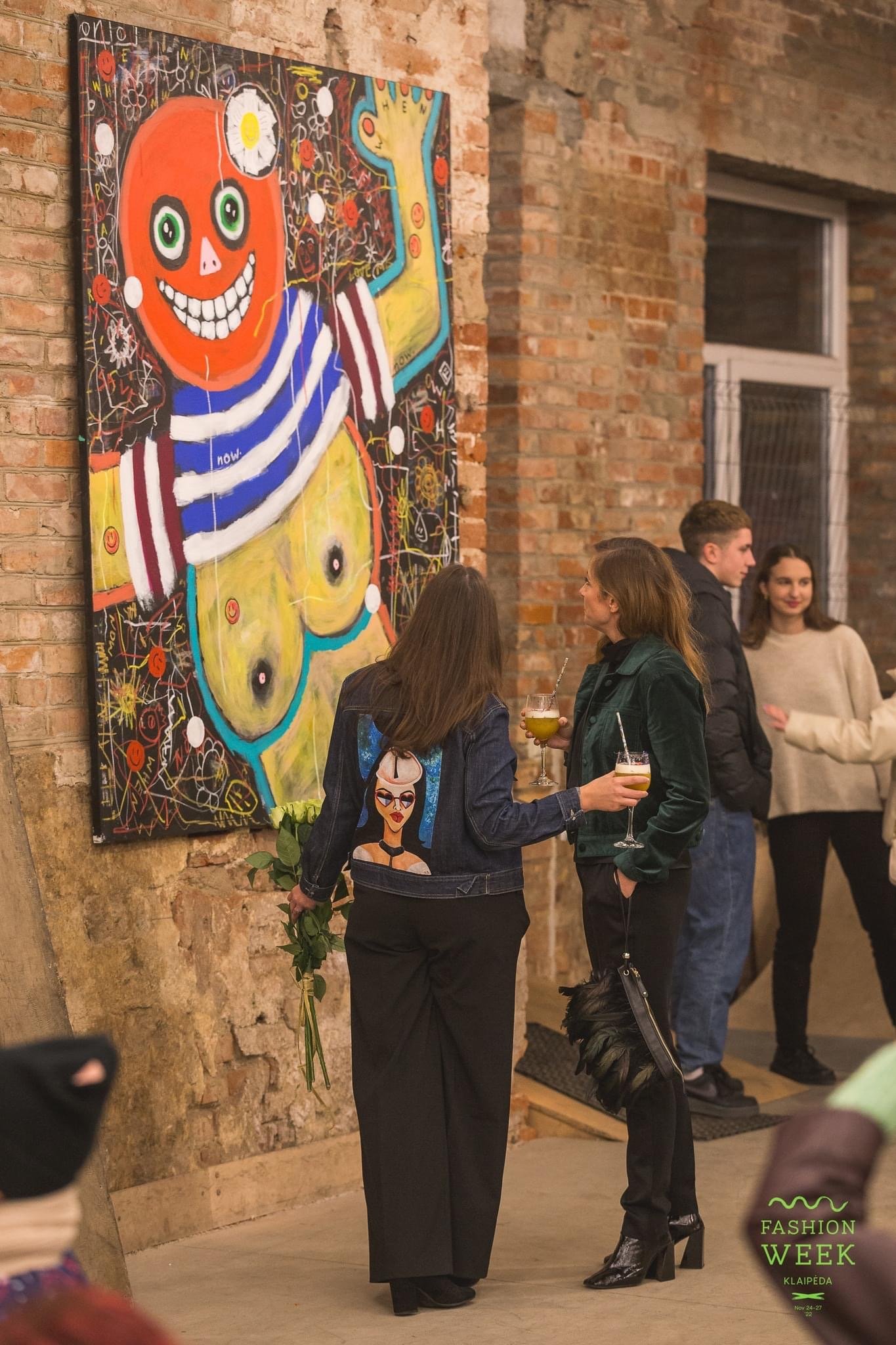
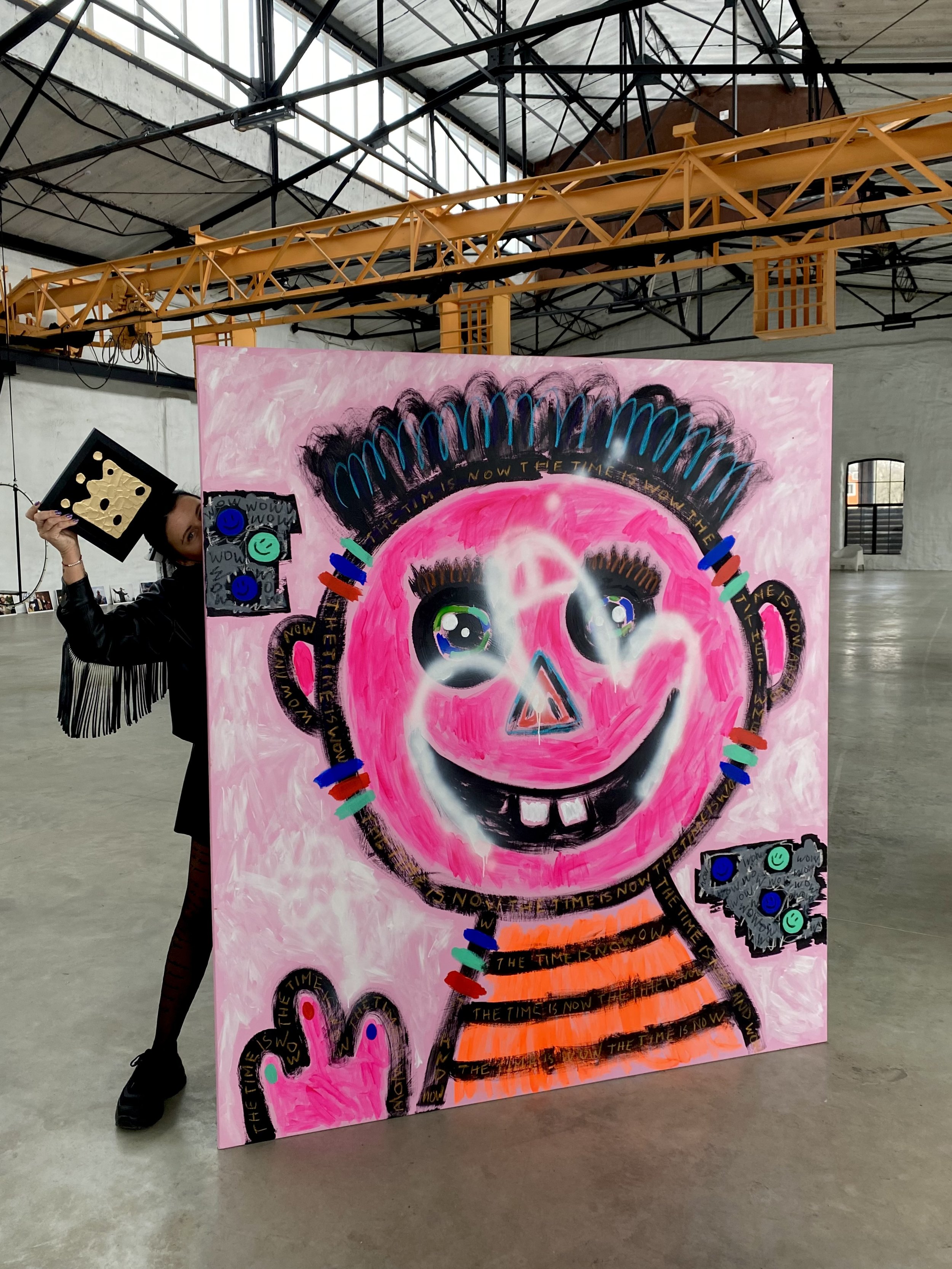
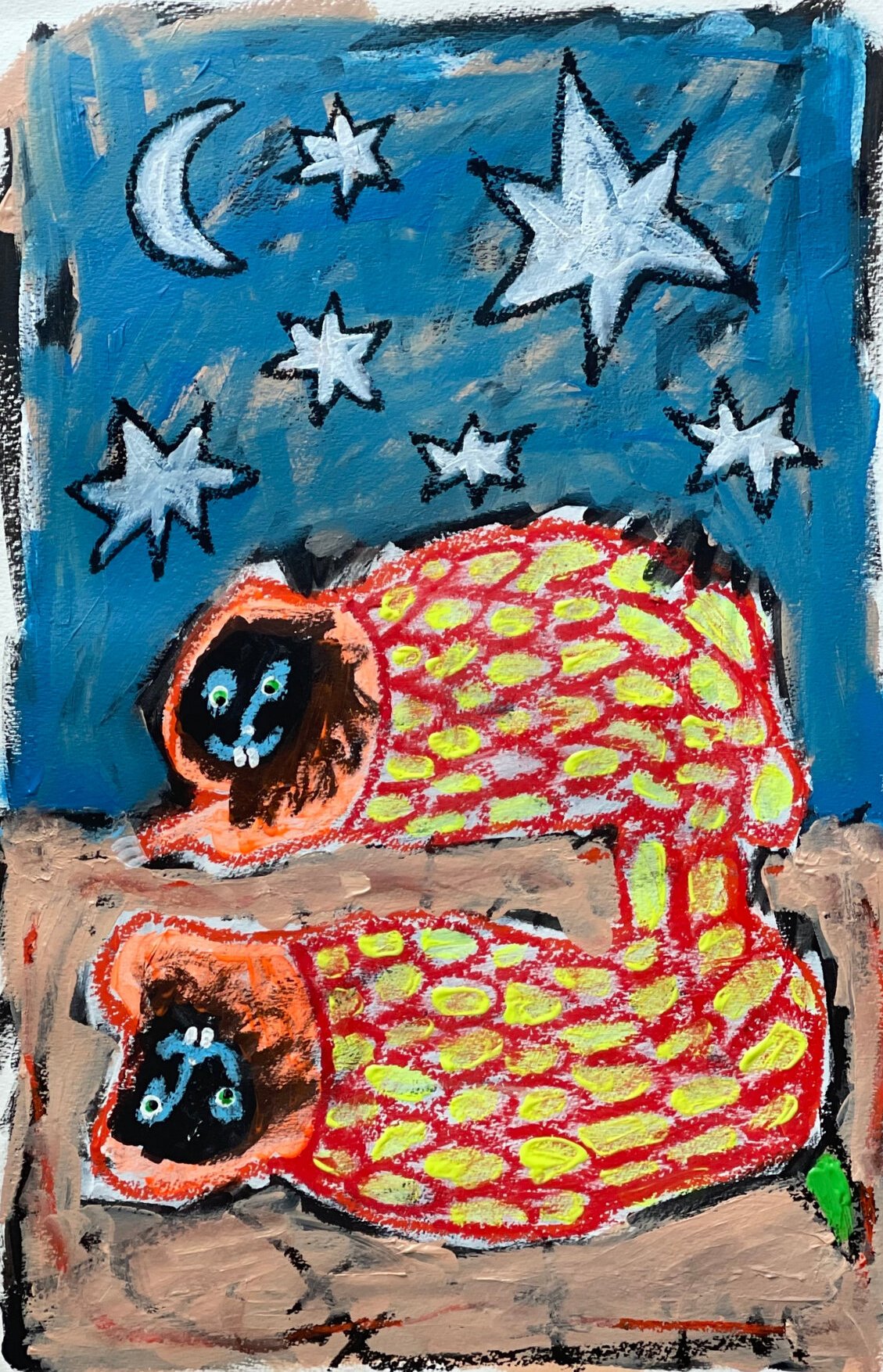
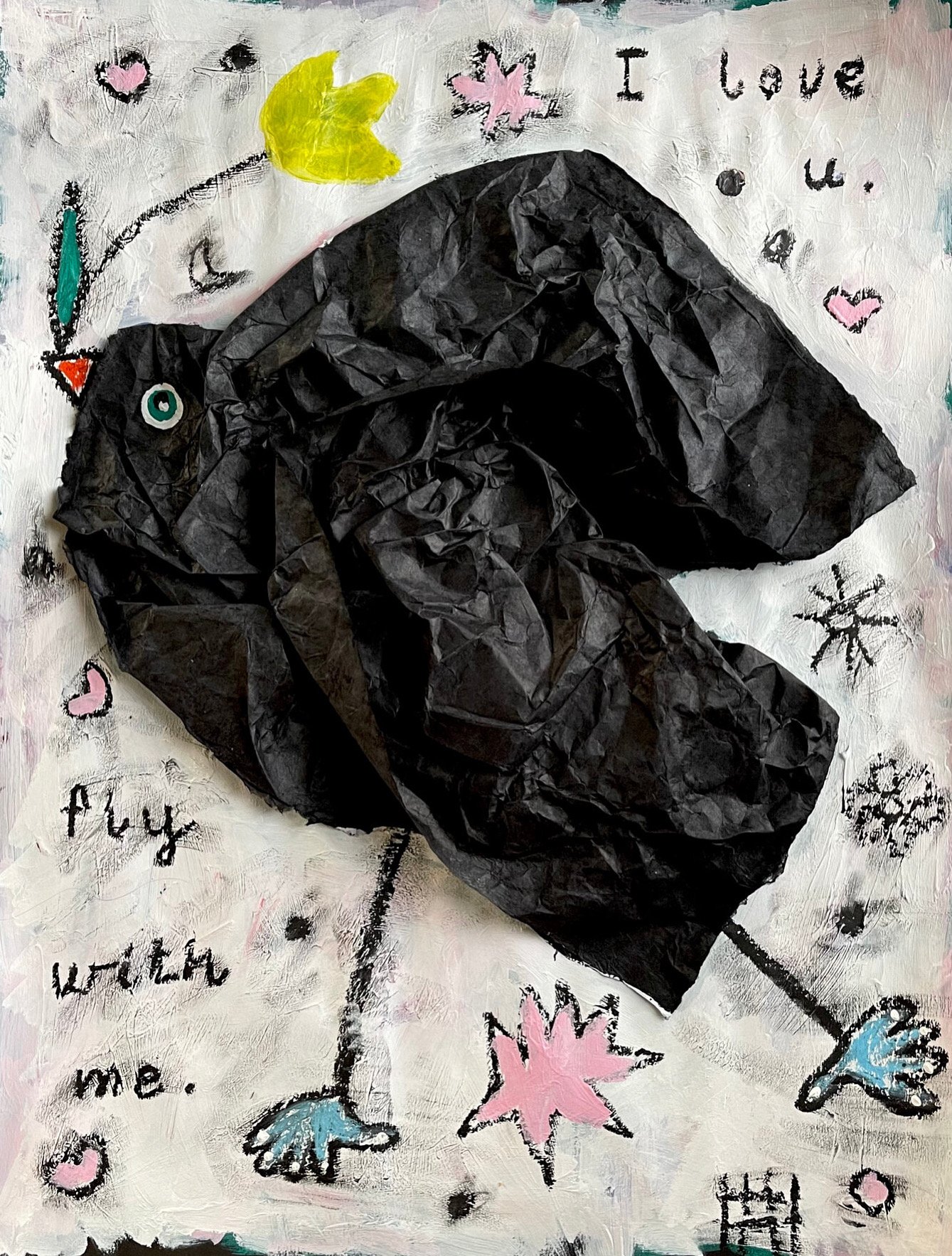
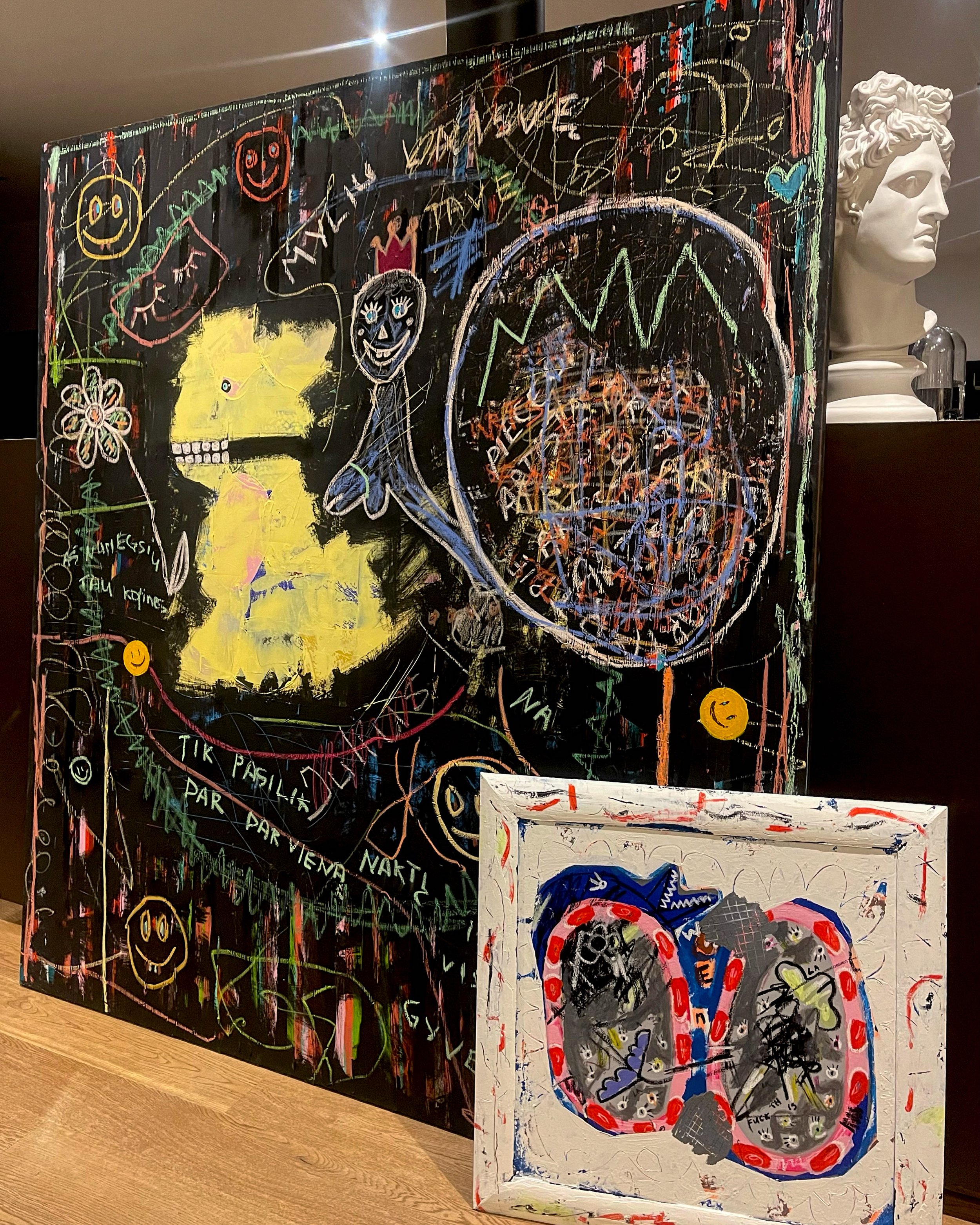
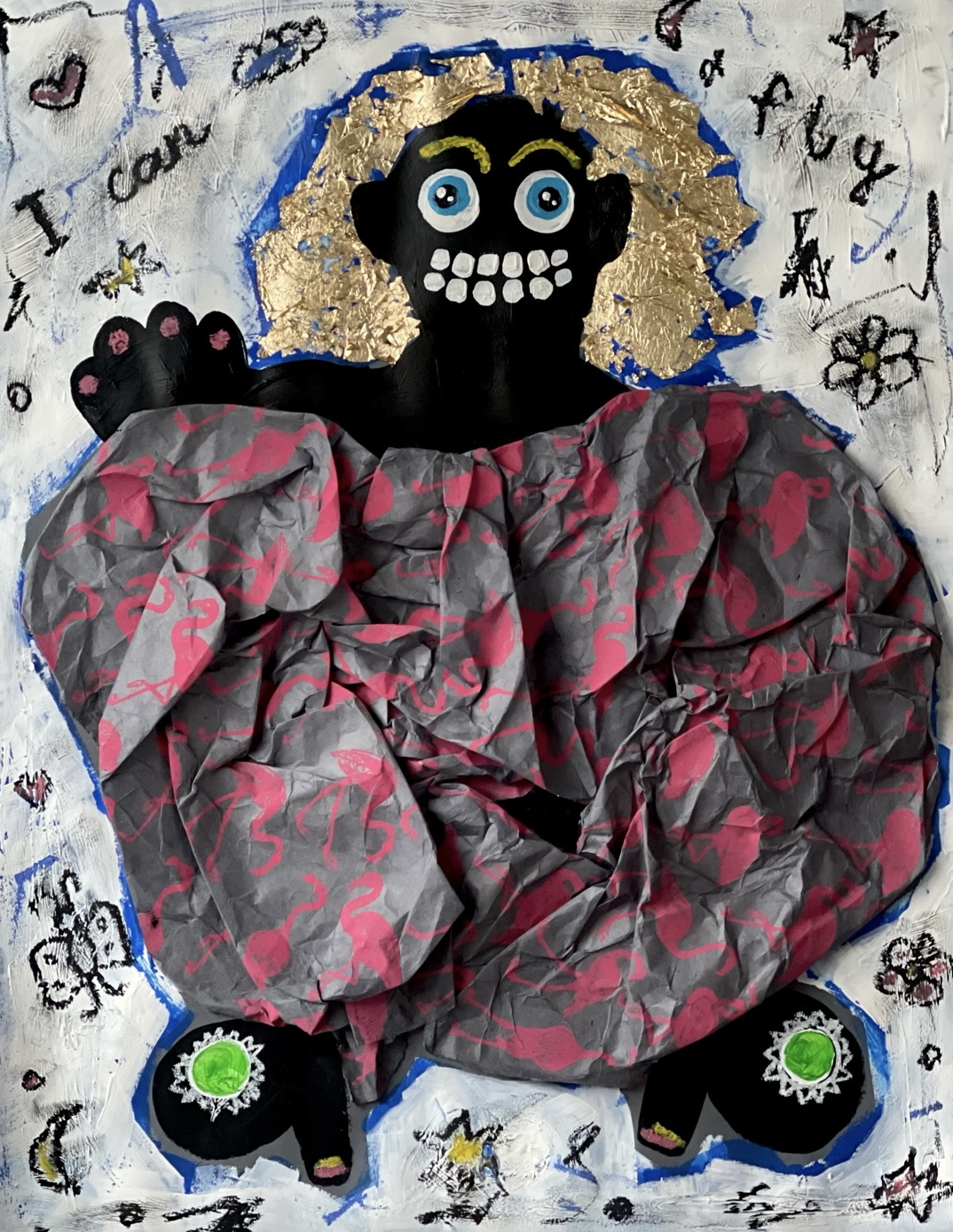
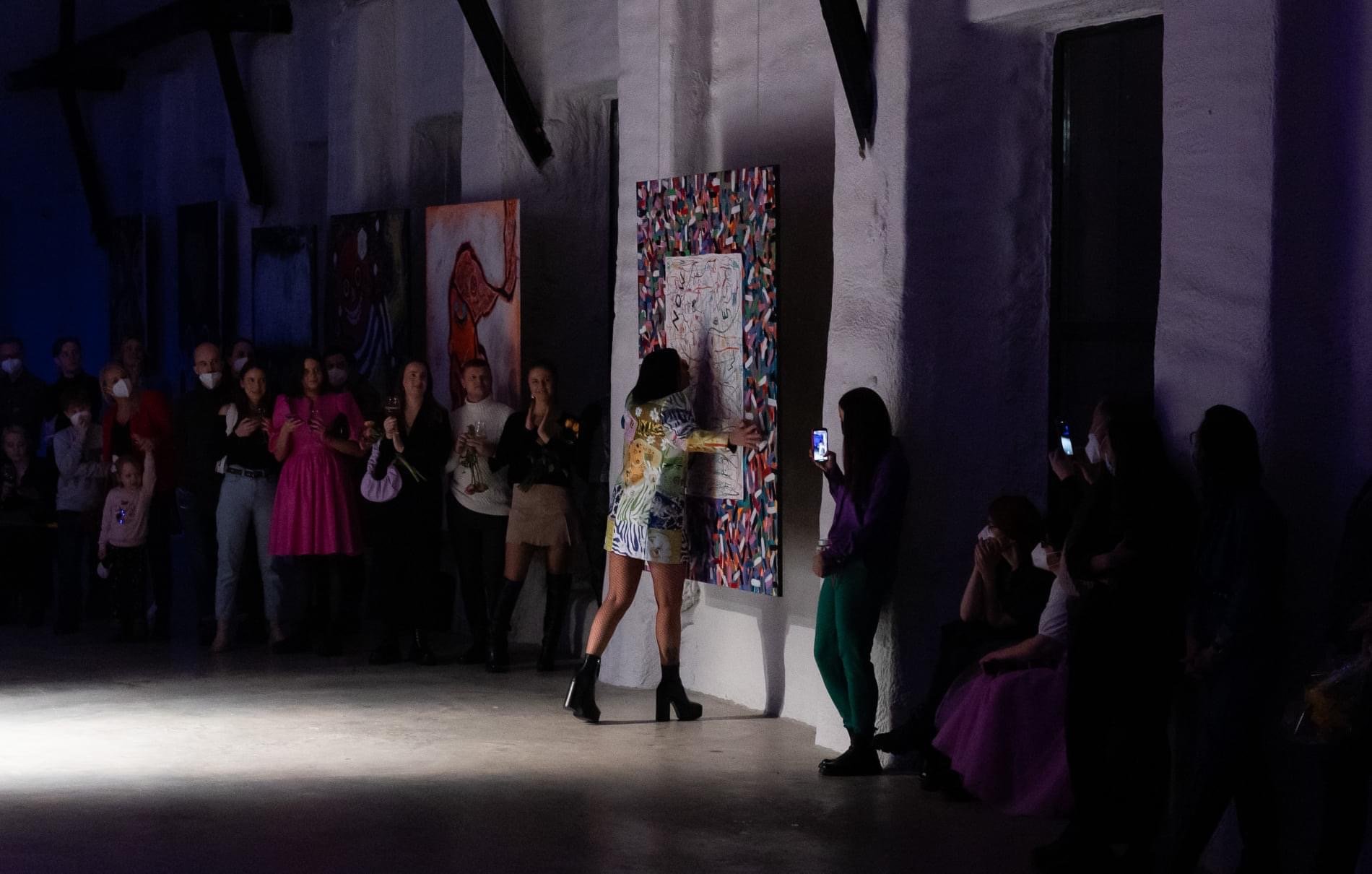
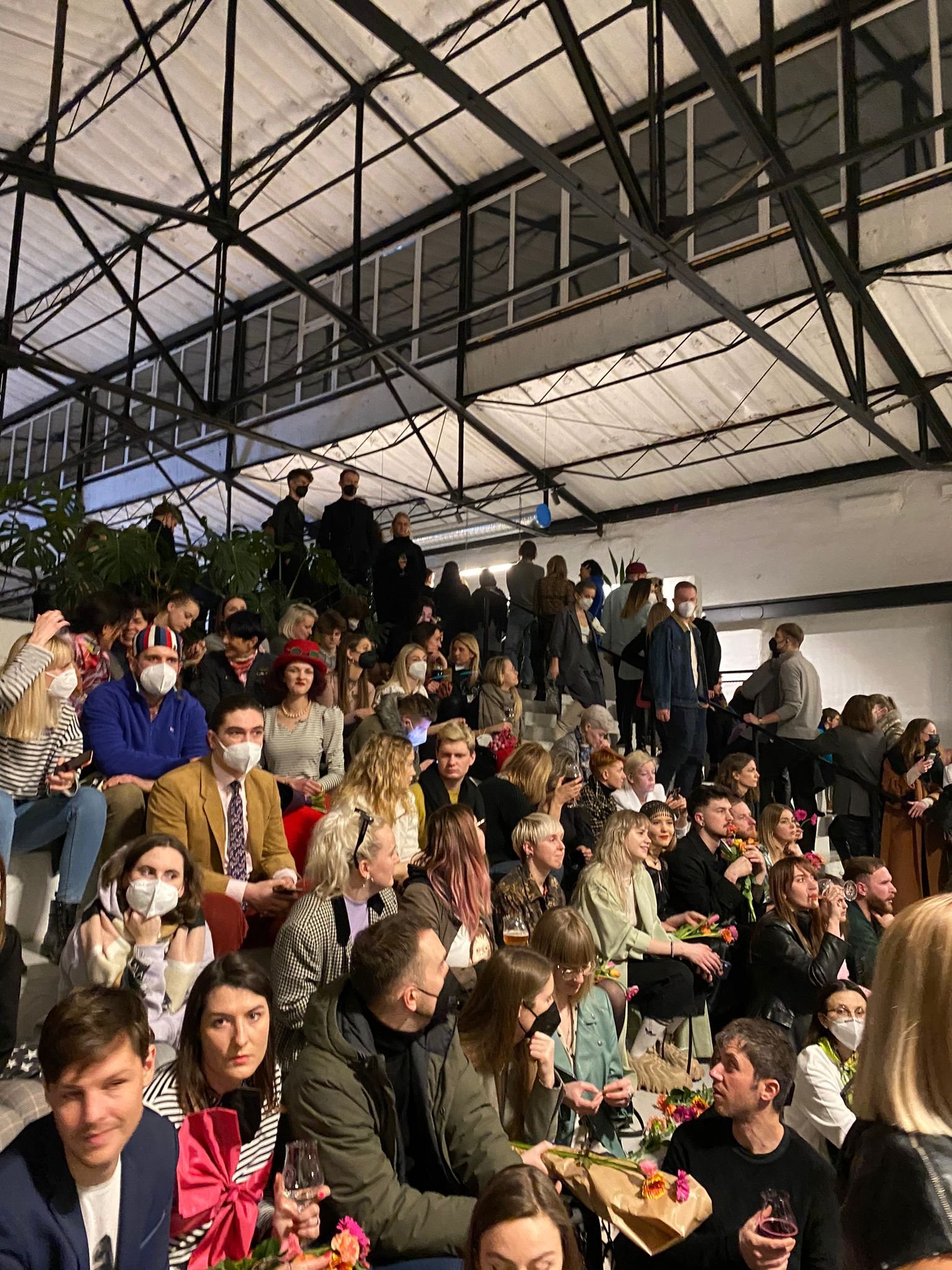
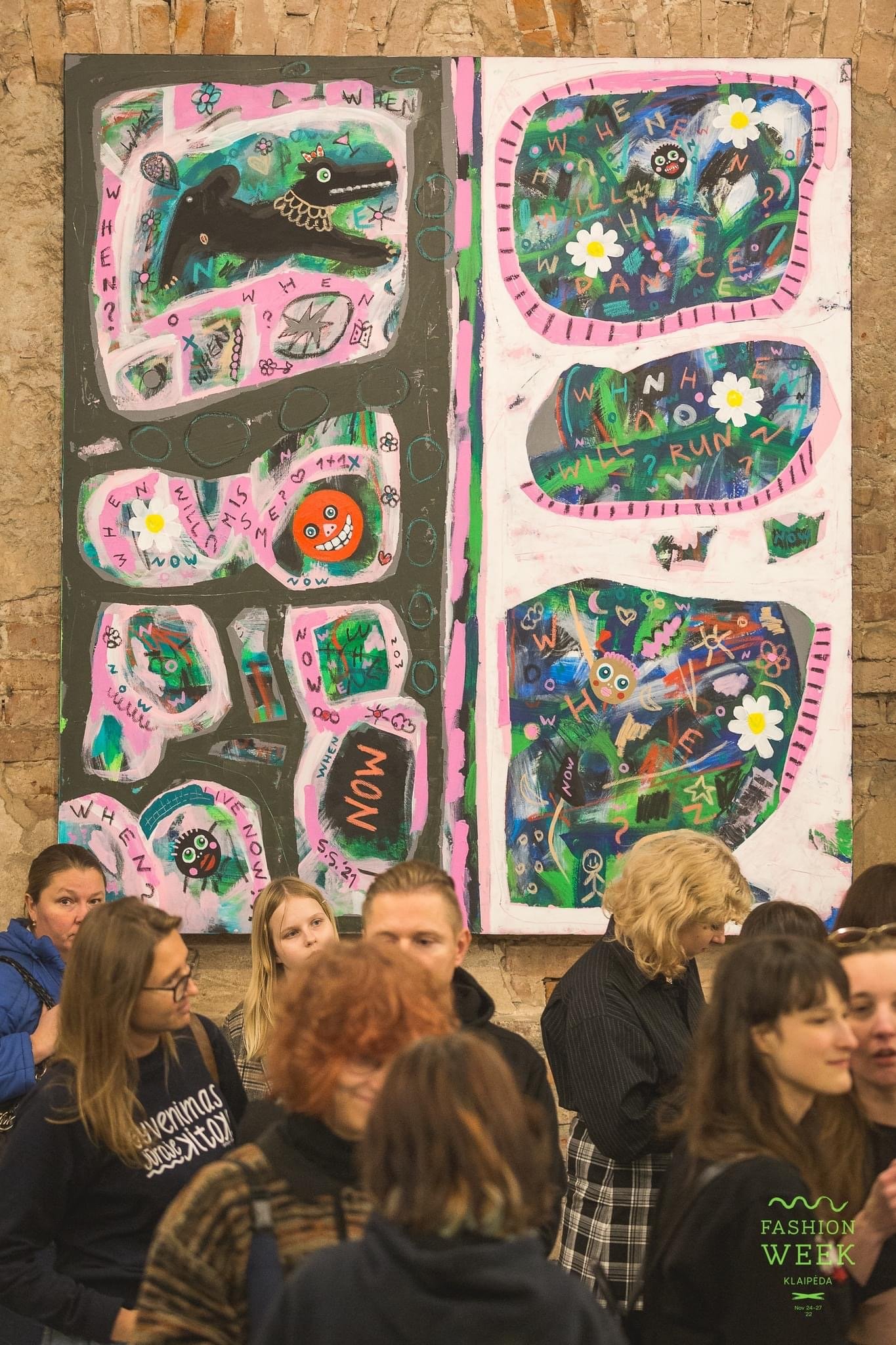
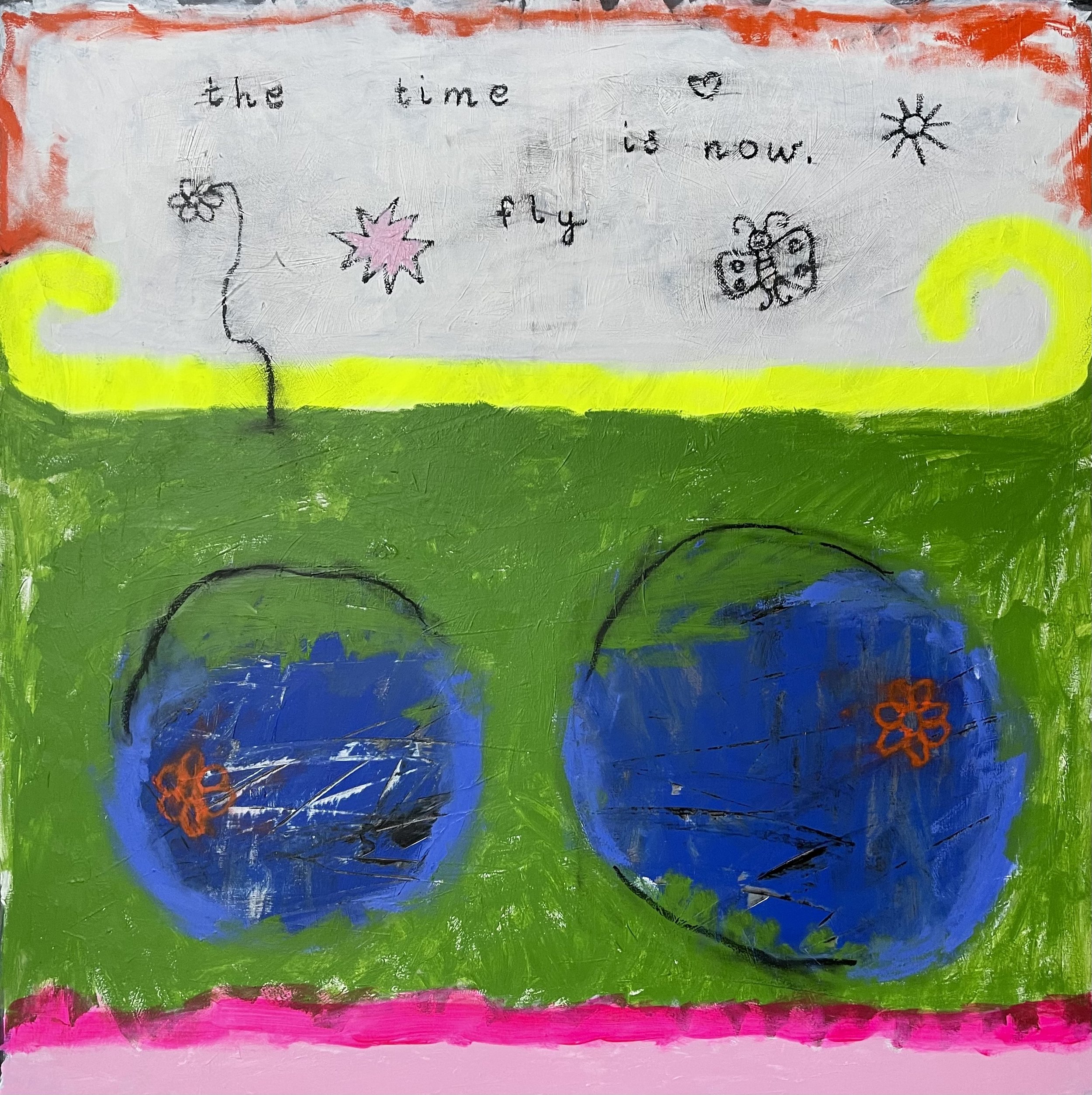
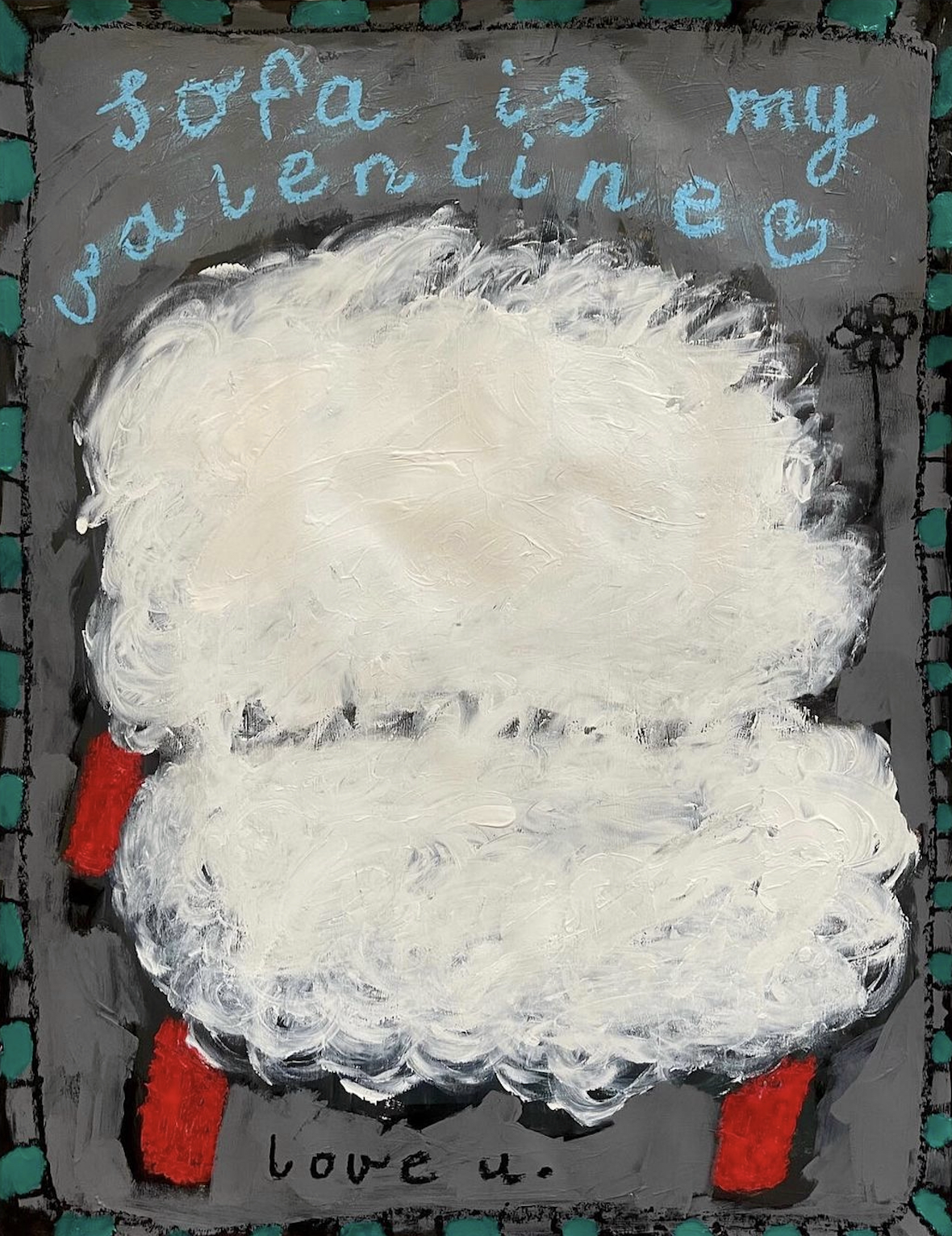
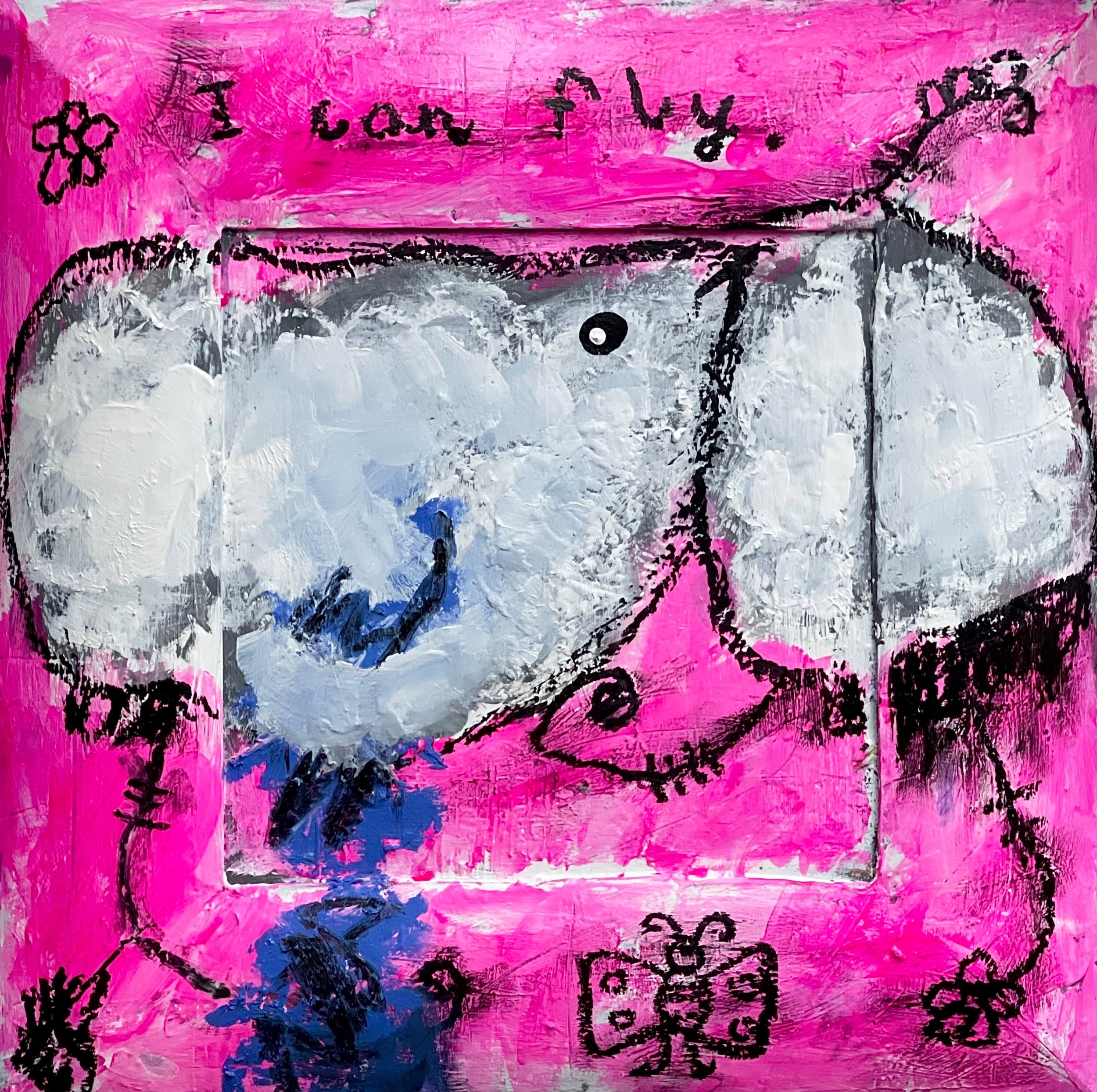
ARTIST INTERVIEW: Andzelika Bilyte.
Andzelika Bilyte, born on July 7, 1995, has been cultivating her passion for creating unique abstract art since her teenage years. Les Couleurs Miami Beach Magazine had the privilege of conducting an interview with this young talented Lithuanian artist, who is based in Kaunas, Lithuania. During the interview, Andzelika shared insights into her…
Artist Andzelika Bilyte in Kaunas, Lithuania.
Les Couleurs Miami Beach recently conducted an interview with Andzelika Bilyte, a talented young painter hailing from Lithuania. The interview was led by Liudvikas Jakavicius, the editor of our "Trending in Lithuania" section, who had the pleasure of speaking with Andzelika about her art and creativity.
Andzelika Bilyte, born on July 7, 1995, has been cultivating her passion for creating unique abstract art since her teenage years. Les Couleurs Miami Beach Magazine had the privilege of conducting an interview with this young talented Lithuanian artist, who is based in Kaunas, Lithuania. During the interview, Andzelika shared insights into her artistic inspiration. Additionally, she generously donated one of her magnificent works for the "Les Couleurs Charity" Christmas Gala which was held in Vilnius, Lithuania in December of 2022.
LIUDVIKAS JAKAVICIUS: Hello Andzelika, thank you for taking the time to speak with us today. To begin, could you please share with our readers where you were born and raised?
ANDZELIKA BILYTE: Certainly! I was actually born in small and charming township near Radviliskis district municipality in Siauliai County, Lithuania.
LIUDVIKAS JAKAVICIUS: How, if at all, has your hometown and its surroundings influenced your artwork?
ANDZELIKA BILYTE: Absolutely. As someone who also has a deep appreciation for abstract art, I've found that my hometown and the surrounding natural landscapes have had a profound influence on my work. Growing up in Radviliskis, I spent a lot of time immersed in nature, observing the patterns, colors, and textures that make up our environment. These experiences have undoubtedly shaped my artistic vision and continue to inspire me to this day.
LIUDVIKAS JAKAVICIUS: Thank you for mentioning how nature has influenced your artwork, Andzelika. I'd love to hear more about where you draw inspiration from. In addition to nature, are there any other sources of inspiration that you often turn to when creating your art?
ANDZELIKA BILYTE: I believe that inspiration can be found in all aspects of life, including movies, songs, theater, exhibitions, etc. However, allowing that inspiration to manifest can be a challenge. Personally, I prefer to be in a positive and clear mental state before creating art. When I'm feeling down, I find it difficult to paint. Therefore, it's crucial for me to clear my mind before starting a painting.
As an artist, I view my work as a representation of myself and my emotions. When I sell a painting, I'm not just selling a canvas; I'm selling a part of my art and my soul. That's why it's essential for me to be happy and at peace when I'm painting. In this way, I can transmit positive energy to my audience and share my joy through my art.
LIUDVIKAS JAKAVICIUS: Who would you say are your biggest artistic influences or favorite artists?
ANDZELIKA BILYTE: There are actually many artists that I admire and draw inspiration from, so it's difficult to pinpoint just one. However, if I had to name someone in particular, I would say that Skaiste Semenike is an artist whose work I deeply admire. I find her use of color and texture to be particularly compelling, and the way she creates abstract compositions that evoke her emotions and sensations is truly inspiring to me. Overall, though, I'm constantly discovering new artists and artistic styles that inspire and challenge me, so my influences are constantly evolving.
LIUDVIKAS JAKAVICIUS: Did you attend an art school or receive any formal training in art? If so, could you tell us a bit about where have you studied and what your experience was like?
ANDZELIKA BILYTE: Yes, I actually attended an art school for my high school education. After finishing my main lessons at school for the day, I would typically spend the afternoons and evenings focused on developing my skills in the arts. I have many fond memories of this time, and I believe that it laid a strong foundation for my future artistic pursuits. Although I ultimately chose a different path for my university studies, I never stopped painting and exploring different artistic techniques. Art has remained a constant passion in my life, and I continue to learn and grow as an artist every day.
LIUDVIKAS JAKAVICIUS: When have you done your first painting?
ANDZELIKA BILYTE: When I went to the art school, although the exact date escapes me at the moment.
LIUDVIKAS JAKAVICIUS: How did you discover your passion for art? When did you realize that you truly love art?
ANDZELIKA BILYTE: It's actually a somewhat sad story. In 2019, I was going through some difficult times and was searching for ways to relax and distract myself from my thoughts. I tried going to the gym and walking in the forest, but nothing really helped. That's when I started painting again and realized that it was the best way for me to feel relaxed and happy. From those hard times, something good emerged.
For me, painting is really therapeutic. Just looking at my paintings makes me feel more at peace. I think that art can be a form of therapy that is even better than seeing a psychologist. I'm not saying that therapy is bad, but for me, painting is just really helpful.
I first started drawing when I was in art school, but that was a long time ago. I stopped for a while and only started painting again in 2019. So now it's been four years since I picked up the paintbrush again.
LIUDVIKAS JAKAVICIUS: What is your happiest moment in in arts?
ANDZELIKA BILYTE: I don't want to sound strange, but I find the happiest moment in my art when I see the satisfaction of my customers. When I sell a painting, I always enjoy meeting the person who is buying it. Witnessing their first reaction and seeing the smile on their face brings me immense joy. It's a great feeling to know that my art has touched someone and made them happy.
LIUDVIKAS JAKAVICIUS: Thank you for taking the time to speak with me, and I'd also like to express my gratitude for the donation you made to the Les Couleurs Charity.







ARTIST INTERVIEW: Rolandas Zigonis.
Born in 1987, and educated between Lithuania and the United Kingdom, painter Rolandas Zigonis took up the brush at a very early age but became a professional painter in his adulthood. Rolandas Zigonis’s creative energy has exploded, embracing a vertiginous array of techniques and abstract expressionism…
Artist Rolandas Zigonis at his studio in the forest, near Vilnius, Lithuania.
Photos: Dovalde Butenaite for "Lamu slenis" magazine.
Les Couleurs Miami Beach interviewed Rolandas Zigonis, a renowned painter based in Vilnius, Lithuania. The interview was conducted by Liudvikas Jakavicius, our editor for "Trending in Lithuania".
Born in 1987, and educated between Lithuania and the United Kingdom, painter Rolandas Zigonis took up the brush at a very early age but became a professional painter in his adulthood. Rolandas Zigonis’s creative energy has exploded, embracing a vertiginous array of techniques and abstract expressionism. Rolandas Zigonis’s work has, canvas by canvas, a unique style, and a distinctive code, like a DNA, which makes his work easily to be recognized. Today, Les Couleurs Miami Beach Magazine is talking with the Lithuanian artist from Kaunas who had the generosity to donate one of his astonishing works for the first Christmas Gala of the American NGO Les Couleurs Charity in Vilnius, Lithuania.
LIUDVIKAS JAKAVICIUS: Where are you from?
ROLANDAS ZIGONIS: Kaunas, Lithuania. I was raised there and after high school, I decided to go abroad, so I decided to go to the United Kingdom. After my stay in Cambridge, I felt a calling to go back to my homeland.
LIUDVIKAS JAKAVICIUS: Did you go to the UK for your studies?
ROLANDAS ZIGONIS: I wasn't sure what to study, or which direction to choose. I started working and then I realized that it was not really interesting. There was a need to learn something new, so I decided to start studies at Cambridge Regional College and then I just choose to study Drawing and Painting. After one year of studies, I just felt that I really want to come back to Lithuania. So, I stopped my studies there and came back to Kaunas and started my studies in Painting Restoration at Kaunas College Faculty of Arts.
LIUDVIKAS JAKAVICIUS: What was the difference between studying in the United Kingdom and studying in Lithuania?
ROLANDAS ZIGONIS: Well, the studies at Cambridge Regional College were great. They have magnificent facilities with all the equipment an art student needs. They were even giving you the acrylics, the paper, and the brush. When I came back it was like a shock. I arrived straight to the entrance exams in Art Academy in Kaunas. The facilities of the faculty were on the premises of an old psychiatric hospital which was closed, so it was a bit stressful for a beginner student. I had entrance exams there and tried to start studies in the graphic design study program. I did not pass, so the same summer almost accidentally I started Painting Restoration studies at Kaunas College Faculty of Arts. This program had a lot of classical painting disciplines, so that's how I found my true love - painting.
And the quality of the lecturers was really good. I believe that things are going pretty well in Lithuania and that we really have very good specialists in the arts. Yet, sometimes maybe we are a bit conservative if you compare it with the Western traditions where they're open for experiments. But overall we have quite good professionals.
LIUDVIKAS JAKAVICIUS: Are you a full-time painter?
ROLANDAS ZIGONIS: I started working as an art director in one of the largest advertising agencies in Lithuania. However, after 6 years, I had an enormous desire for a deeper knowledge of the universe and myself, so I decided that it was time to end my corporate life. I traveled to look for the answers in Latin America (the Andes and the Amazon jungle). These spiritual trips have brought me a unique and different perception of the world, and Nature has become my greatest source of inspiration. I made a decision back then - I want to do things in my life that makes my heart happy. I had a feeling that my artistic path had started there.
So, yes, now I can say that I am a full-time artist already for five years.
LIUDVIKAS JAKAVICIUS: When have you done your first painting?
ROLANDAS ZIGONIS: This is difficult to say. I wouldn't call the whole draws I have done paintings. The first artwork that I would call a real painting was made probably in 2019 because, before that, I did many drawings but I call them just studies and experiments. Why? Before I was not knowing exactly what I'm doing because with paintings you need to tell a story and express a position from yourself. As I continued my experiments deeper understanding came, I realized that flats in the canvas start to open, and with each painting, since then I was learning how to fly. So this painting back in 2019 gave me the ability to notice this inner space and dive into it.
LIUDVIKAS JAKAVICIUS: Which style influences your work?
ROLANDAS ZIGONIS: For sure, abstract expressionism. I was and still am a fan of this New York school, like Jackson Pollock or Clyfford Still. I like the whole philosophy of this abstract expressionist movement. When I work, I also start with abstract expressions. I noticed that those expressed abstractions are like feelings and emotions that are recorded on the canvas. It is like a piece of information, like a code, and I choose to do the next step uncoding those feelings and emotions by entering into surrealism.
Painter Rolandas Zigonis at the “Art Compensa 2022“ art fair in Vilnius, Lithuania.
LIUDVIKAS JAKAVICIUS: Who are your biggest artistic influences (Lithuanian and non-Lithuanian)?
ROLANDAS ZIGONIS: I love many artists. It may sound a bit banal but I adore Salvador Dali. I love the territories of subconsciousness he was going deep into and I'm also kind of experimenting in the same field. If we talk about Lithuanians, again, it may sound banal because probably every Lithuanian will mention the same artist, but I really admire Ciurlionis. He is a good example of an artist’s purpose in our society. By saying artist’s purpose, I mean it’s like why do we need artists in our society? Why do we need artists like him? What is the role of the artist in society? and Ciurlionis is a good example of all that. His works allow us as a society to explore our inner space. He is like a lighthouse for those who are missing hope, seeking love, and looking for refuge. I found this by myself in his work and believe that all society does as well. His works allow us to see wider how the world is and to discover possibilities to grow as better people. To summarize, he opened a space of inspiration, where everybody can dive in and look for the answers and ideas.
LIUDVIKAS JAKAVICIUS: What has influenced your creative work?
ROLANDAS ZIGONIS: Me as an artist, I'm always in the chase for inspiration, in the chase for new experiences. For those experiences that are building me as a person, that gives me experience that helps me to grow. Sometimes it is meeting new people, talking about art, learning to ride a horse, throat singing, sleeping on the beach, and listening to nature. After all the experience of life itself influence my work.
LIUDVIKAS JAKAVICIUS: Do you think that it is important to go to the Art Academy to become a professional artist?
ROLANDAS ZIGONIS: If you would ask this question 50 years ago, the answer would be yes. But I believe that with such a large amount of information that we are allowed to access easily in our daily lives, thanks to the internet, you can learn a lot on your own. The rules are changing these days, after all, you may find that there aren’t any of them. So it's just a question of creativity, motivation, and your own desire to become an artist. Of course, I'm not saying that the basics are not important. They are very important. The basics give the knowledge to your hands. But the creativity flows from a different source and sometimes in university you wouldn't find this place.
LIUDVIKAS JAKAVICIUS: How did your love for art come about?
ROLANDAS ZIGONIS: Everything comes from childhood. When I was a kid one of my favorite activities was to draw and watch how my father draws. I really loved colors and especially coloring books, I always remember my hands fully covered in colors, not so much has changed nowdays.
LIUDVIKAS JAKAVICIUS: How have you found your own style?
ROLANDAS ZIGONIS: I realized that this style that I'm doing now, I've got an inspiration subconsciously from my father. I got inspiration from his handwriting because his handwriting is really expressive. It has really round lines and I remember from my teenage years, that I was telling my dad that his handwriting is amazing and that I would like to write like him. His answer to this was, “if you want to write like this just allow your hand to do so, you only need to allow your hands to fly on the paper”. This actually put me on my expression style.
LIUDVIKAS JAKAVICIUS: What is your happiest moment being involved in art?
ROLANDAS ZIGONIS: Of course, there are a lot of nice and interesting feelings, especially when you are starting. For example, when a person comes to an exhibition of my work or to my studio and you see the person being emotionally touched, sometimes even crying after they see a piece of my work. This gives me motivation. Before I just wanted to have fun and now I want to create something for others, to share my art by giving shelter to those who seek emotional refuge. That's why I choose to be an artist. Another day a waitress came to me in the restaurant, she smiled and said - “you know, I'm a big fan of your work. I even have one of your paintings as wallpaper on my phone.“ These are really magic moments and just remind me that I am creating art for people, even for those who are not buying my art, because I am creating art for all people that are seeing my work.
LIUDVIKAS JAKAVICIUS: Thank you so much for your time and also for the donation you have made to Les Couleurs Charity.




ARTIST INTERVIEW: Julija Jankelaityte.
Born on August 20, 1993, and educated between Lithuania and the United Kingdom, artist Julija Jankelaityte took up the brush at a very early age to follow her dream of being a professional painter. Today, Les Couleurs Miami Beach Magazine is talking with the Lithuanian artist from Vilnius who had the…
The artist Julija Jankelaityte at her studio in Vilnius, Lithuania.
Photos: Lukas Pijus Miksys.
Les Couleurs Miami Beach interviewed Julija Jankelaityte, a renowned Lithuanian painter and sculptor. The interview was conducted by Liudvikas Jakavicius, our editor for "Trending in Lithuania".
SHORT BIO: Julija Jankelaitytė (b. August 20, 1993), a contemporary artist hailing from Vilnius, Lithuania, is known for her captivating exploration of the intersections between realism, abstraction, and symbolism. She firmly believes that art should transcend the mere representation of objective reality, delving into the subjective and emotional aspects of the human experience.
Julija's creative process is driven by intuition, allowing her works to surpass the boundaries of traditional representation and establish a profound connection with the viewer on an intuitive level. From an early age, she embarked on an artistic journey, discovering the evocative power of colors and textures inspired by the poetic countryside that surrounded her.
Her artistic education took her to the Stanislav Moniuszko School of Art and London Metropolitan University, where she honed her skills and expanded her artistic vision. With her talents recognized and appreciated, Julija has exhibited her works in prominent art hubs such as London, Berlin, Zurich, and Vienna. However, she eventually returned to her hometown of Vilnius for her inaugural solo exhibition in 2020, a milestone in her artistic career.
Julija's unique artistic expressions have garnered the admiration of esteemed collectors, including Nobel Prize winner Antonio Castro Netto and Guggenheim Museum trustee Frank Yu, solidifying her position as a respected and sought-after artist in the contemporary art scene.
LIUDVIKAS JAKAVICIUS: Hello Juilija. Thank you for your time in agreeing to give us this interview. My first question that is quite easy is - where are you from?
JULIJA JANKELAITYTE: I grew up in a small town in the south of Vilnius, Salcininkai, and spent most of my childhood in the countryside.
LIUDVIKAS JAKAVICIUS: Are you a full-time painter?
JULIJA JANKELAITYTE: I am and have been for a couple of years now. I did have a few corporate roles in the past before fully giving myself to art.
LIUDVIKAS JAKAVICIUS: When have you done your first painting?
JULIJA JANKELAITYTE: I've painted or done something that falls under the Art term for as long as I remember. It was this visceral feeling, a subconscious urge. My first memories of drawing and/or painting are those of flowers in my grandmother's garden.
LIUDVIKAS JAKAVICIUS: Which style influences your work?
JULIJA JANKELAITYTE: My main interest in art is the perception of human form and condition, therefore - figurative, although sometimes a pure fact isn't enough to express the feeling so I turn to abstract.
LIUDVIKAS JAKAVICIUS: Who are your biggest artistic influences (Lithuanian and non-Lithuanian)?
JULIJA JANKELAITYTE: M.K. Ciurlionis has always amazed me with his ability to create this immersive mystical world but I found that influence from Francis Bacon, Egon Schiele, Loribelle Spirovski, and Ryan Hewett is more relevant to my work.
LIUDVIKAS JAKAVICCIUS: Did you go to an art school in Lithuania, and if so to which school?
JULIJA JANKELAITYTE: I did get a formal art education in Stanislav Moniuszko Art School, where I've built the necessary skill set in art history, painting, drawing and sculpture.
LIUDVIKAS JAKAVICIUS: I know that you have studied in London. How was your experience in the United Kingdom?
JULIJA JANKELAITYTE: London is an unforgiving place running on chaos. Studying there was a challenge but it helped me develop perseverance and discipline. Time there let me break some rules and explore art beyond academia, laying ground for my personal style.
LIUDVIKAS JAKAVICIUS: Have you ever been working in the UK or outside Lithuania?
JULIJA JANKELAITYTE: After my studies in London I moved to Berlin, later spent some time between Vienna and Zurich before moving to Vilnius four years ago.
LIUDVIKAS JAKAVICIUS: Where do you find inspiration?
JULIJA JANKELAITYTE: Mostly in people and experiences. Sometimes it's a result of a disciplined process of studying objects and analytical observation.
LIUDVIKAS JAKAVICIUS: Which exhibition/s do you feel more proud to be part of it?
JULIJA JANKELAITYTE: My first exhibition in Berlin holds a special place in my heart but I'm always proud of my work to be a part of a good cause - like this Christmas Gala, or The Butterfly Ball by Cauldwell Children charity.
LIUDVIKAS JAKAVICIUS: How did it come about your enthusiasm for art?
JULIJA JANKELAITYTE: I think it was the beauty of "making" first. Observing the surroundings and replicating it in any available medium with my own hands. Later it grew into my own language and now it's this divine wonder of creation that keeps surprising and inspiring.
LIUDVIKAS JAKAVICIUS: How long have you been drawing and how long did it take you to develop your own style?
JULIJA JANKELAITYTE: Given the developing technology and concept of art and my drive to experiment, I believe my style will never be set to something constant. It's a lifelong process.
LIUDVIKAS JAKAVICIUS: What is your happiest moment being involved in art?
JULIJA JANKELAITYTE: The serenity of knowing I've found and can confidently exercise my purpose in life.
LIUDVIKAS JAKAVICIUS: What do you like about your work?
JULIJA JANKELAITYTE: Freedom of doing whatever you want at the pace you choose, where and when you prefer.
LIUDVIKAS JAKAVICIUS: Thank you so much for your time and also for the donation you have made to Les Couleurs Charity.


